Mexico City, Mexico


In Mexico City, it is possible to observe 356 species of native birds, of which 47 species are in some local or international risk category. Of the total diversity, 120 species are resident. However, a large number of birds migrate or transit from North America to spend the winter, as the city is part of the central flyway, one of the four main routes. Due to this, it is possible to observe 235 species of birds that are in a migration category and that maintain resident populations in the city and also, 121 species that are exclusively migratory.
Migratory birds can find in Mexico City a variety of ecosystems such as forests, scrublands, wetlands and natural grasslands, as well as urban green areas where they can take refuge for several months and then return to their breeding areas. These natural ecosystems are protected in a System of Natural Protected Areas and of Environmental Value Areas, a Ramsar Site, two Important Bird Conservation Areas (IBA) and a complex network of urban green areas.
The Ministry of the Environment develops different activities to provide quality habitat where they can find places of refuge and resupply of food and water, so that they can survive and continue their trips. Hard work has been done restoring natural ecosystems and green infrastructure, establishing 44 million trees and other plants, as well as restoring more than 30 kilometers of rivers. In addition, community brigades are in charge of fire prevention and response, and the removal of waste and invasive plants. These activities are very important for the conservation of natural ecosystems and specifically for wetlands, since the water lily (Eichhornia crassipes) invades until it completely covers them, preventing the arrival of birds by perceiving it from the sky as a green area and not like a body of water.
Due to the lake origin of the city, 34 new wetlands (31.09 hectares) have been created and 722 hectares of these ecosystems have been restored, mainly in Xochimilco and Tláhuac, where the arrival of up to 220 species of birds has been recorded. Additionally, the Bird Beach has been created in the San Juan de Aragón Forest, which is visited by 192 species of birds.
30 million plants have been incorporated into conservation land and 14 million into urban land of 80 species, many pollinated by insects. More than 1,000 pollinator gardens and insect hotels have also been created, in collaboration with 979 trained women and community brigades, which represent a valuable source of resources for nectarivorous and insectivorous birds. This has been complemented by the promotion of agroecological practices in more than 12 thousand hectares and the recovery of 1 million square meters of chinampas, with the participation of more than 40 thousand people from ejidos and communities that inhabit these territories.
The biodiversity monitoring program developed by community brigades allows us to learn about the species that make use of green spaces, integrating citizens in bird watching and nature photography tours and other conservation activities. Thanks to the participation and interest of citizens in the care of urban wildlife, new species and large flocks have been registered.
Definitely, the birds that have surprised citizens the most are the American White Pelican, Wilson’s Phalarope and the Belted Kingfisher observed in wetlands and the flocks of Cedar Waxwing on urban land. Among the most charismatic insectivorous species are the Canada Warbler, Wilson’s Warbler, Hammond’s Flycatcher, Black-and-White Warbler and others.

The City Government of Puerto Princesa initiatives thru the office of the City Environment and Natural Resources Office (City ENRO):
Protected Biodiversity Areas
As the only Highly Urbanized City in the entire region of MIMAROPA, The City Government of Puerto Princesa find it critical to establish protected areas and other biodiversity reserves such as the Palawan Flora, Fauna, and Watershed Reserve (PFFWR), Magarwak Nature Research and Ecological Park (MNREP), Cleopatra’s Needle Critical Habitat (CNCH) and the Puerto Princesa Subterranean River National Park (PPSRNP) that help maintain natural ecosystems and support its community thru its ecosystem benefits. These areas harbor a rich diversity of flora and fauna, rivers, crees and streams, including endangered and threatened species, and serve as an important refuge for wildlife, including migratory birds. Protected areas serve as critical stopover sites where migratory birds can rest, refuel and replenish their energy reserves during long-distance migrations. These areas provide abundant food resources, safe roosting places, breeding grounds, and suitable habitat conditions for birds to recover from the ordeals of their flight during migration. By protecting these areas, Puerto Princesa ensures that migratory birds have suitable stop-over (resting) and nesting sites where they can “feed and rest” during their journeys.
Coastal Area Maintenance
Activities like mangrove planting through the “Love Affair with Nature” and CGPP’s Bays Conservation through coastal clean-up initiatives under “Save the Bays”, now on its 9th episode, contribute to the health of coastal ecosystems. Mangroves and bays are critical habitats for insects, numerous marine living things and other small organisms that form the base of the food chain. Puerto Princesa boasts a sprawling coastline spanning 416 kilometers, showcasing a rich diversity of landscapes. Additionally, the mangrove areas within the city cover a total expanse of 6,281 hectares. By maintaining these coastal ecosystems, Puerto Princesa City supports the availability of insects, which in turn supports migratory birds that feed on them.
Love Affair with Nature under City Ordinance No. 287, passed on December 26, 2005, is one of the City Government of Puerto Princesa’s local policy that is focused on rehabilitating and enhancing coastal area management. The said ordinance declared every 14th of February a yearly activity were the large City community participate in mangrove planting. Dubbed and institutionalized as “Love Affair with Nature”, it expanded Valentine’s Day’s expression of love from the customary person-to-person and added a concern to protect mother nature and as a continuing call to ensure the protection and sustainable use of the natural resources. The event heightens awareness of the people on the ecological role of mangroves and other coastal ecosystems in the vital web of life, (Hon. Feliberto S. Oliveros III, December 26, 2005, City Ordinance No. 287 of the 11th Session of the Sangguniang Panlungsod of the City of Puerto Princesa).
Establishment of Nurseries for (Endemic/Local) Forest Tree Species
Establishing nurseries for (endemic) forest tree species and fruit tress not only supports reforestation but also enhances the biodiversity of the locality. Trees provide a natural habitat for a variety of insects, creating a conducive environment for their reproduction and survival. As these forests grow and mature, they become attractive destinations for migratory birds, providing food and shelter. The maintenance of these nurseries provides support to our continuing efforts to reforest denuded areas, bolster private reforestation endeavors and help in providing accomplishment of the exacted Corporate Social Responsibility of our business community. The game plan is to provide these seedlings for free.
Reforestation efforts in Puerto Princesa City is already institutionalized as early as the year 1991 and celebrated annually thru an event called “Pista Y ang Cagueban” (Feast of the Forest) This yearly activity helped restore degraded areas, providing habitats for countless species of plants, animals, insects, fungi, and microorganisms. The efforts help restore and expand habitat for various species of endemic flora and fauna, promoting biodiversity conservation and supporting ecosystem resilience. This activity culminates the consciousness of the City’s inhabitants and a reminder of their responsiblity to help the Government restore its natural forest. City Ordinance No.216 formalized this activity and its annual observance.
Avian Fauna Assessment in Protected Areas and Wetlands.
Given that birds are good barometer of a healthy environment, henceforth, the City Government of Puerto Princesa thru the Office of the City ENRO, essentially focuses on the conduct of periodic annual bird assessment to provide us key information, and data of these avian species to help us understand their role in our ecosystem. The information provided by this activity inculcate in our consciousness the importance of conserving avian fauna biodiversity, maintaining a balanced and healthy ecosystem, and sustaining the benefits that birds provide to society. Bird assessment involves evaluating the status, abundance, distribution, and trends of the bird population. Assessing bird populations such as migratory birds help prioritize conservation efforts by identifying bird species at risk of decline, also, monitoring bird populations provides insight into the overall condition of an ecosystem.
We made an extra step forward by embracing avian eco-tourism in the City to support our local bird assessment effort. We initiated in partnership with the Puerto Princesa Subterranean River National Park (PPSRNP) the PPUR International Bird Photography Race in November 2015 and is still proceeding up to this year. This annual assessment event under the auspices of an eco-tourism activity, provided us records of both endemic and migratory birds. Data of migratory birds during this activity include rare and first country records. Additionally, the PPUR-IBPR contributes to the local circular economy of the City.
We participate in the annual Asian Waterbird Census with the National Government thru the Department of Environment and Natural Resources (DENR). City ENRO’s participation in these monitoring efforts contributes to the broader conservation goals and supports the establishment of key areas for migratory birds such as the Snake Island found in Honda Bay of Puerto Princesa City. Regular monitoring of migratory bird populations helps assess the health of habitats and identify the need for conservation efforts to preserve biodiversity. This data is crucial for understanding their migratory patterns, identifying threats, and implementing effective conservation strategies.
Environmental enforcement
The City Government of Puerto Princesa have invested in the field of enforcement. placed under the Office of the City ENRO are the Bantay Gubat (Forest Guardians), Bantay Dagat (Sea Guardians) and Bantay Bakawan (Mangrove Guardians). They are the government arm to impliment and impose obedience to the various environmental laws of the Republic and local policies. Their activities include the deterrent of wildlife trafficking, IEC and cooperation with local partners and the community.
Collaboration with Key Agencies: Working with organizations like DENR and PCSD/S promotes collaboration and the sharing of resources. It promotes a unified approach to bird conservation by combining expertise and data from various stakeholders. Through this collaboration, the following benefits are achieved:
Contributing to Conservation Outcomes: It is our objective to directly contribute to the conservation of migratory birds and their habitats. We are exerting efforts to work with other key partners and support local as well as global community to broaden our environmental objectives, enhance our capability and approach in biodiversity preservation, and widen our understanding of ecosystem health, and the sustainability of natural resources. The current effort of the City ENRO is the establishment of a new RAMSAR site within urban district. We are excited to pursue this project in collaboration with our local and international partners.

Cascais Municipality is located on Portuguese coastline, bordered by the Sintra mountains at the north side, and the Atlantic Ocean in the west and south sides. A large portion of municipality, over 28% of territory (2641ha), is inserted in Sintra-Cascais Natural Park and is part of Natura 2000 Network (Sintra/Cascais SCI PTCON0008), a protected area that extends from the coast to the mountains and interior plateau, with several different habitats present, including heathlands, mixed oak and pine forests, mediterranean matorral, dry grasslands rich in orchids, riparian forests and humid tall grasses, sand dunes and costal cliffs and reefs. Ecological network also includes small rivers inside urban areas, urban parks and peri-urban rural areas, as well as a local coastal protected marine area (AMPA). In addition, Cabo Raso Marine Site (PTZPE0061) is located along Cascais coastline and is an important feeding area for pelagic and coastal birds. All these natural areas provide stopover sites for several species during their spring and post breeding migrations. Over 130 migratory bird species have been recorded in Cascais, and around 40 migratory species recorded in Cascais municipality are insectivorous.
Cascais Ambiente is the municipal company for waste management, urban cleaning and ecological infrastructure management, and has been carrying out major efforts for keeping and improving city health, environment, natural resources and quality of life. Among many projects, several actions have been helping to preserve and improve birds and insects habitats and food sources, directly and indirectly.
Habitats management, ecological restoration and adaptation to climate change
Cascais Ambiente is responsible for managing and restoring several areas within Sintra-Cascais Natural Park. Quinta do Pisão, a visitation area rich in biodiversity has been actively managed and restored, acting as a pilot area with successful practices expected to be replicated into more areas. It is already possible to see the effects of these practices, as Quinta do Pisão supports highly diverse insect and bird populations, with over 90 bird species recorded during annual monitoring. Recently, Cascais Ambiente started a new project, LIFE ResLand, aiming to adapt natural park and rural peri-urban landscape to climate change, with actions focused on building resilience to wildfires and to improve and restore ecosystems. Major actions being implemented that are expected to promote biodiversity include:
Other habitat management actions include:
Raising awareness and involving the community for nature conservation
Cascais Ambiente has also been caring out extensive work with schools and local communities. Some examples of actions helping to preserve bird and insect habitats and increase awareness for their importance include:
The first-ever Pavilion for Subnational Governments and Cities at UN CBD’s COP15 not only created a home for the subnational and local governments constituency during the conference, but also offered a platform for the launches and announcements of a range of initiatives. During China Day on 13 December 2022, a new initiative titled “Biodiversity Charming City” – operated by ICLEI and China Environment News – announced six Chinese cities who achieved the Charming Cities title, namely: Chengdu, Kunming, Huzhou, Jiaxing, Nanyang, and Shenzhen. The initiative is developed to recognize those cities who have achieved remarkable progress and created best practices in biodiversity conservation at the local level in China. These six cities, which have all joined the CitiesWithNature partnership initiative, are currently implementing numerous biodiversity conservation projects, which are highlighted below.
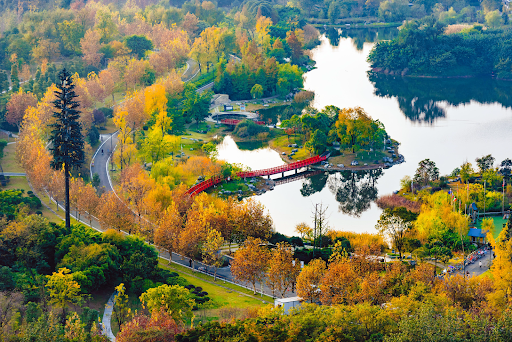
Chengdu City, the capital of Sichuan Province, is a mega-city with a permanent population of 21,192,000 with an urbanization rate of 79.5%. As an important high-tech industrial base in China, its GDP ranked 7th in the country in 2021. Chengdu is also one of the 34 biodiversity hotspots in the world, and rich in endemic and rare species, hailed as the “Garden of Western China” and the “Land of Abundance”. The city has received several titles for its biodiversity, including National Model City for Environmental Protection (2005), “National Forest City” (2007) and in 2020, the Chengdu Research Base of Giant Panda Breeding was granted the title of “National Advanced Collective in Scientific Popularization”
Case study: Fireflies nestling in Tiantai Mountain-lighting up ecological protection
Tiantai Mountain, 110 kilometers from downtown Chengdu, is home to more than 20 kinds of fireflies, with the leading number and species nationwide. Fireflies require very demanding conditions for survival – including high air and water quality. As a result, these insects are regarded as a visual biological indicator. To protect firefly resources and create a viewing base for eco-tourism, Chengdu City prioritizes science-based approaches to ecological conservation and sustainable development.
By 2021, with a forest coverage of nearly 95%, Tiantai Mountain greatly improved the conditions for fireflies to survive, attracting more and more “starry” fireflies to settle in Tiantai Mountain along with many wild animal species. Through the continued protection and cultivation of the area, Tiantai Mountain has been honored as a National Scenic Area, National Forest Park and National 4A-Class Tourist Attraction, strengthening the city’s tourism-based economy.
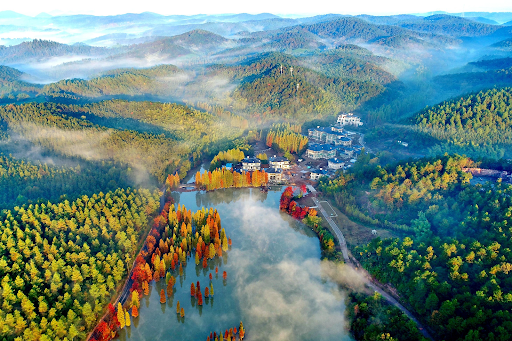
Huzhou is an important ecological conservation area and ecological barrier in the Yangtze River Delta region, with a forest coverage rate of over 48% and a wetland area of 47,800 hectares. The city has formed a wildlife habitat protection system with seven national nature reserves at the core, supplemented by wetland parks and forest parks. In 2013, Huzhou was awarded the title of “National Forest City”, and in 2022, it was approved to set up a sustainable development innovation demonstration zone.
Case study: Anji County, Huzhou City – bamboo ecology and economy in the “Hometown of Chinese Bamboo”
As the “Hometown of Bamboo”, Anji County in Huzhou City attaches great importance to biodiversity conservation. It actively promotes the transformation of bamboo–broad-leaved forests and the practice of interplanting in bamboo forests, transforming moso bamboo species, and cultivating a vast bamboo sea to secure a habitat for wild animals. Simultaneously, it uses bamboo to sequester carbon and increase carbon sinks for sustainable development. With the advantage of rich bamboo forest resources, Huzhou City has established the world’s first moso bamboo forest carbon flux observation system in 2010. In 2016, Anji County developed and completed the “Methodology of Bamboo Forest Operation Carbon Sink Project” and the country’s first bamboo forest operation carbon sink Chinese Certified Emission Reduction (CCER) project. Anji County’s bamboo industry offers bamboo structural materials, decorative materials, daily necessities, fiber products, biological products, and bamboo wood machinery, as well as crafts and food made of bamboo shoots. In 2021, Anji bamboo industries raked in 4.14 billion yuan in total, creating nearly 30,000 job opportunities.
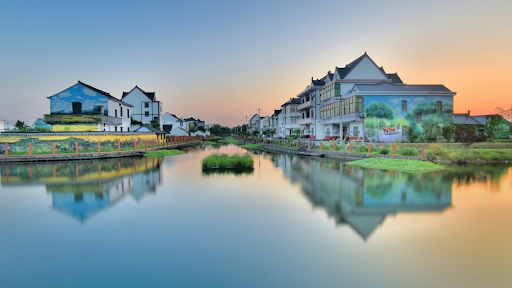
As one of the important cities in the Yangtze River Delta, Jiaxing is home to 5.4 million permanent residents. In the past five years, Jiaxing has invested more than 16 billion yuan in ecological protection and environmental management. The city has more than 3,000 species, including more than 1,000 species of terrestrial vascular plants, 300 species of terrestrial vertebrates, 600 species of insects and more than 1,000 species of aquatic organisms. In 2019, Jiaxing was named the “National Water Ecological Civilization City”, and in 2021, it was approved as a national ecological civilization construction demonstration zone.
Case study: South Lake Park – underwater forest green corridor around the lake
Jiaxing’s South Lake is a water storage hub for major local rivers. In 2020, Jiaxing South Lake District created a pilot water ecological environment demonstration zone in Zhejiang Province, to solve the problems of turbid water bodies and fragile water ecosystems, kicking off the South Lake Ecological Restoration Project. As a result of significantly improved water quality, the transparency of the lake was enhanced and resurging submerged plants in the South Lake area – which had almost entirely disappeared – now cover an area of 1.48 square kilometers, accounting for 28.5% of the water area, and forming a green corridor around the lake.
Jiaxing City has built the “South Lake District Water Digital Support System”, which is the first successful application of using underwater acoustic measurement technology to ensure high-precision and all-terrain measurement of river networks in the plain. This enables the underwater measurement and monitoring of underwater topography of rivers and lakes in the South Lake District, projected visually, to support effective policy-making to solve underwater problems.
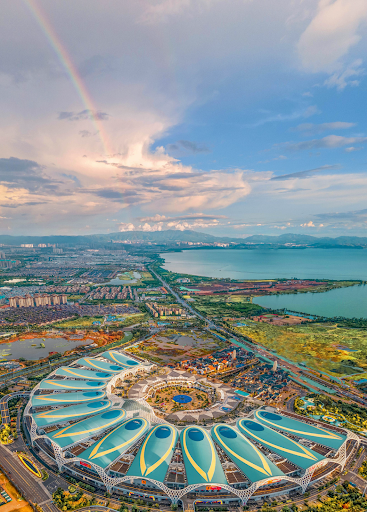
Kunming is the capital city of Yunnan Province – the richest biodiverse region in China and a global biodiversity hotspot – and host city to the UN CBD COP15 Part 1. By the end of 2021, Kunming had a population of 8.5 million long-term residents, of which 6.84 million are urban residents, accounting for 80.5% of the permanent residents population. Kunming’s complex and diverse topography, numerous lakes and rivers, and sound hydrothermal conditions have fostered rich biodiversity. In 2013, Kunming was named the “National Forest City”, in 2009, the “National Garden City”. and in 2022, Kunming was named the “National Greening Advanced Group” by the National Forestry and Grassland Administration.
Case study: Nature-based solutions – biodiversity restoration of Dianchi Lake
Dianchi Lake is the biggest lake in Kunming, serving 64% of the city’s population and 77% of the total economy. Since the 1970s, due to the rapid development of industry and agriculture around the lake, reclamation of land from the lake, and population growth, Dianchi Lake has been severely polluted by sewage. Recently, the Kunming Municipal People’s Government has implemented the eco-environment restoration of the lake, to improve harmony between the people, city, lake and industry.
Kunming has made space for Dianchi lake by returning ponds, farmland and housing to the lake through 90 km of breakwaters. The city has also built an ecological belt, including lakeside wetland, ecological forest, and naturally restored lake wetlands, effectively improving the living environment of wild animals and plants, and greatly improving the biodiversity of Dianchi Lake. At present, the natural shoreline rate of Dianchi Lake has reached 89%, forming a basically closed ecological belt around Dianchi Lake.
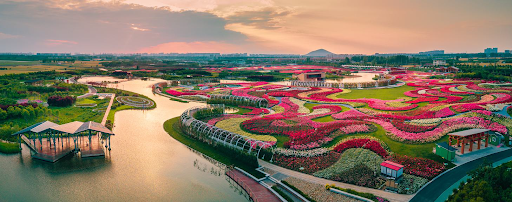
Nanyang City is the geographical and cultural center of China, and home to the Funiushan Global Geopark and Baotianman Biosphere Reserve. In 2018, Nanyang City was approved as a national forest city, a national model city for greening, and a national pilot city for water ecological civilization. In 2021, the case of “Conservation and Restoration of Water Sources in the Middle Route of the Danjiangkou South-to-North Water Diversion Project in Henan” was included among the “100+ Biodiversity Positive Practices and Actions around the World” by the UN. Finally, in 2022, Nanyang was rated as one of the first national pilot zones for ecological progress.
Case study: Ecological Restoration of Water Sources in the Middle Route of the Danjiangkou South-to-North Water Diversion Project in Henan
Henan Danjiang Wetland National Nature Reserve is one of the richest biodiverse areas in Nanyang and crucial to providing safe drinking water for nearly 79 million residents living in Beijing, Tianjin, Hebei and Henan. However, the reservoir area of Danjiangkou Reservoir has a highly fragile ecological environment, with persistent challenges such as stony desertification of mountains, slope soil erosion, non-point source pollution of farmland and unsustainable use of wetlands.
Over the past three years, degraded wetland of 4 million square meters at Danjiang Wetland National Nature Reserve has been restored, and over 6 million trees such as bamboo willow, dawn redwood, poplar, reed, and mulberry trees have been planted, which has vastly improved the wetland’s ecological environment. Numerous bird species have settled in the reserve, including the protected great bustard, golden eagle, and scaly-sided merganser species. The Danjiang Wetland has become the most important habitat and breeding place for birds in Henan Province and the most important place of transit for migrating birds in North China. This progress has further led to improved patrol, management and protection of the Reserve.
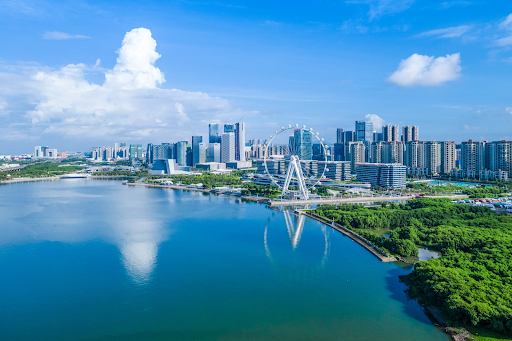
Since its origin in 1979, Shenzhen has rapidly developed economically into a megacity with a permanent population of 17.68 million, a GDP of over 3 trillion yuan, and an urbanization rate of 100% in 2021. Shenzhen is both a mountainous and coastal city with diverse ecosystems and rich biological resources. In 2018, Shenzhen was approved to become an innovation demonstration zone for sustainable development, and in 2020, it was named the “National Model City for Ecological Progress”.
Case study:Public participation in the management of nature reserves: A case study of Futian Mangrove Ecological Park
The Shenzhen Futian Mangrove Ecological Park forms part of the coastal wetland ecosystem of Shenzhen Bay, creating a buffer zone between nature and the city for urban biodiversity protection. To protect natural ecosystems in the park, the city’s approach included mobilizing and educating the public, as well as improving public services. Ultimately, the Shenzhen Municipal Government is working towards a model characterized by government leadership and public participation in nature reserve management, with guidance from experts.
As a result of this approach, biodiversity in the park has increased – in particular, the 22 species of mangrove plants and species recorded on the IUCN Red List of Threatened Species. Moreover, the ecological park creates opportunities for local and global exchanges and promotional activities to create awareness of the importance of the park. The marine forest restoration project of the ecological park was included among “Top 10 Typical Cases of “Nature-Based Solutions in China” by the Ministry of Natural Resources and IUCN.
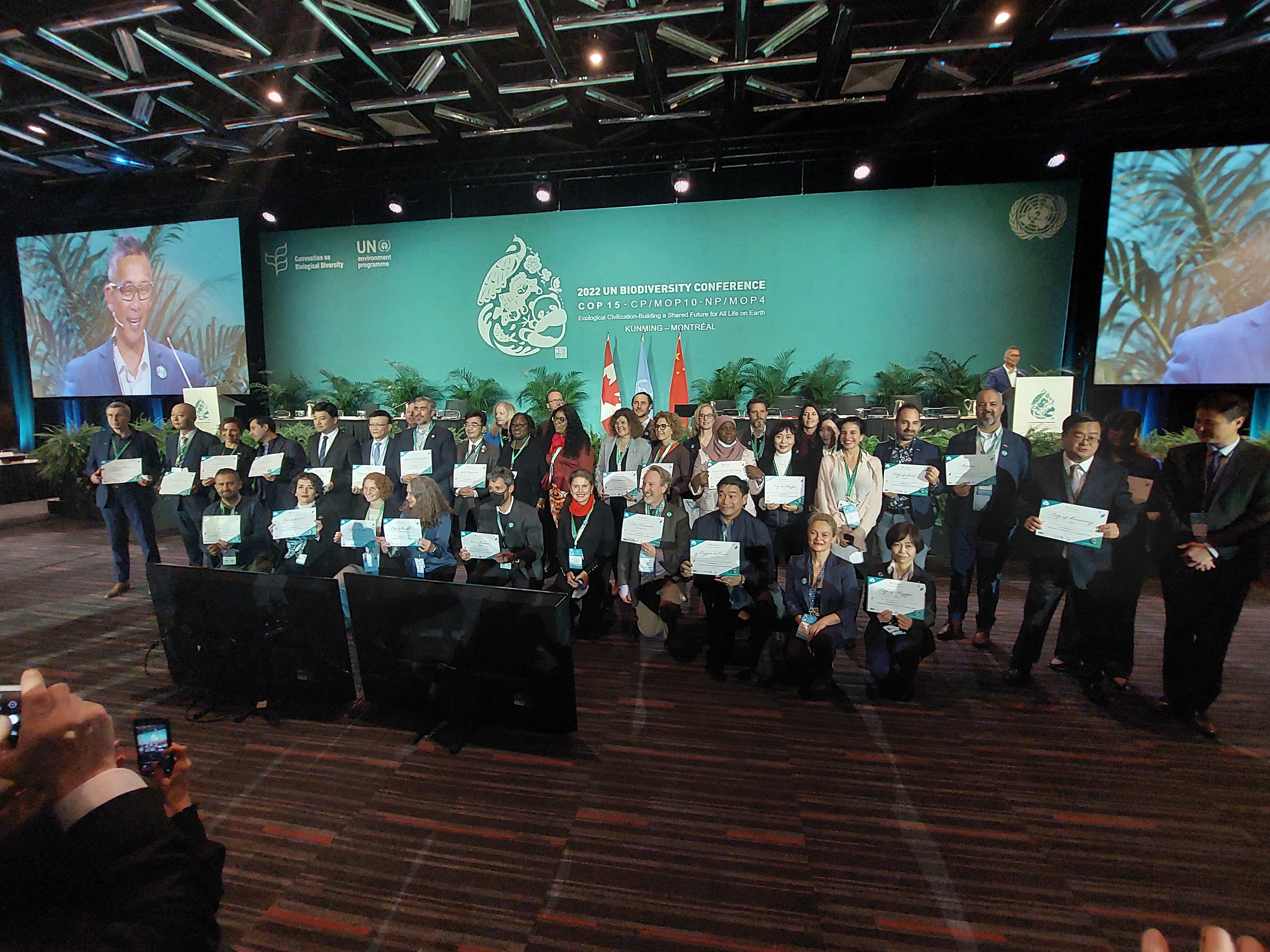
The UN Convention on Biological Diversity’s 15th Conference of Parties (COP15) from 7 to 19 December 2022 in Montréal provided the ideal opportunity for the CitiesWithNature and RegionsWithNature global partnership initiatives to highlight their notable progress in recent months.
CitiesWithNature has particularly experienced significant growth since its launch in 2018. During the 7th Summit for Subnational Governments and Cities at COP15, 36 new cities and five new global partners were welcomed to the CitiesWithNature global partnership initiative, which is recognized by the UN Secretariat of the Convention on Biological Diversity as the platform where subnational governments, cities and other local authorities report on their actions and voluntary commitments to the global biodiversity framework.

“By joining CitiesWithNature and using the Action Platform, cities across the world can commit ambitious actions that contribute to national and global biodiversity and nature goals, and easily track their achievements and actions individually and collectively. We strongly encourage all cities and regions, large and small, no matter where they are on their sustainability journeys, to join us and ensure we bring about the urgent transformative change that is needed!”
Kobie Brand, Deputy Secretary General of ICLEI - Local Governments for Sustainability and Regional Director of ICLEI Africa.
The sister platform to CitiesWithNature – RegionsWithNature – which focuses on subnational governments at the regional level and across urban-rural linkages, was officially launched on 12 December at the 7th Summit. During the CitiesWithNature and RegionsWithNature Announcement Ceremony, eight new subnational governments and two new global partners were welcomed on board.
“Launching RegionsWithNature, together with some of the most powerful subnational leaders in the world, sends a powerful signal to the planet, and especially to the Parties of the Convention. Subnational governments are committed, they’re ready, and they’re already playing an important role in implementing concrete actions on the ground.”
Jordan Harris, Executive Director of Regions4

New cities, regions and partners joining CitiesWithNature and RegionsWithNature at the 7th Subnational Governments and Cities Summit


NEW CITIES
City of Oakland, USA
City of Santa Monica, USA
Lake County, USA
City of Carbondale, USA
San Francisco, USA
City of Boulder, USA
City of Boston, USA;
Sainte-Anne-de-Bellevue, Canada
City of Laval, Canada;
Cartagena das Indias, Colombia
Autonomous Decentralised Municipal Government of Pastaza Cantón, Colombia
Alcaldía de Barranquilla, Colombia
Metropolitan Area of Aburrá Valley, Colombia
City of Roseau, Dominica
City of Portsmouth, Dominica
City of Utrecht, Netherlands
City of Paris, France
City of Marseille, France
Iringa Municipal Council, Tanzania,
Kisii County, Kenya,
Tswelopele, South Africa
Waterberg, South Africa,
Kampala, Uganda
Mukono Municipal Council, Uganda,
The District Council of Black River, Mauritius,
Hargeisa Municipality, Somalia,
Chengdu, China
Huzhou, China
Jiaxing, China
Kunming, China
Nanyang, China
Shenzhen, China
City of Nagoya, Japan
Chiang Mai, Thailand
Caygan de Ouro, Philippines
Mashhad Municipality, Iran

NEW REGIONS
La Rioja, Spain
Basque country, Spain
Aland islands in Finland
California in USA
Rio de Janeiro, Brazil
Paraná in Brazil
Guanajuato, Mexico
Jalisco in Mexico
New partners
The United Nations Economic Commission for Europe (UNECE)
WHO (World Health Organization)
CC35 (Capital Cities of the Americas)
CitiesWithNature and RegionsWithNature:
The Convention on Migratory Species (UN CMS)
R20 (Regions of Climate Action)
"Thank you for being part of the two Platforms, which give us the space to act together. As Nature is our home so are CitiesWithNature and RegionsWithNature."
Stefania Romano, Global Coordinator of CitiesWithNature and RegionsWithNature

Knowledge sharing
CitiesWithNature and RegionsWithNature provide educational resources to ensure that cities are equipped with the knowledge and understanding of natural resources and ecosystems required to ensure that these issues are included in the cities and regions’ goals and planning.
One of the primary goals of these platforms is to keep city officials updated on best practices and lessons learned about important biodiversity topics, predominantly through the Tools and Resources section, but also by connecting cities and regions with one another. Connecting subnational and local governments facilitates much-needed collaboration across all levels of government to achieve the biodiversity goals as captured in the newly adopted Kunming-Montreal Global Biodiversity Framework.
“We need to strengthen our collaboration, our network, our initiative in conservation to maximize the solutions which work, through the platforms CitiesWithNature and RegionsWithNature.”
Benoit Charette, Minister of Environment, the Fight against Climate Change, Wildlife and Parks Québec

With 373 scientifically robust resources – including reports on topics such as nature-based solutions, ecosystems, health and well-being, and biodiversity governance, the Tools & Resources section empowers cities and regions with current and updated information on best practices.
CitiesWithNature offers Guides that package science-based information in a way that is easy to understand and accessible to cities. During COP15, CitiesWithNature announced that its Guide on light pollution, created in collaboration with the UN Convention on Migratory Species, will be launched soon.
In 2022, CitiesWithNature created its first Community of Practice – which is a platform aimed at connecting cities to learn from one another, by predominantly utilizing its chat function. The platform also aims to bring together the broader community of researchers and practitioners to connect with cities to solve biodiversity-related challenges. The first Community of Practice was launched for coastal cities, in collaboration with the Western Indian Ocean Marine Science Association (WIOMSA).
Knowledge sharing has been facilitated through a range of tools and activities including targeted campaigns, news and updates, as well as webinars to empower cities with the knowledge of how to use the Action Platform. CitiesWithNature also uses its newsletter – the Buzz – to keep cities updated with current events, news and important information, while also profiling the achievements of CitiesWithNature cities and RegionsWithNature regions in achieving their biodiversity targets.
During the 7th Summit for Subnational Governments and Cities, Regions4’s Case Study Database, one of RegionsWithNature’s new tools, was launched. The Database is a freely accessible open source online database that showcases the subnational government experience. Currently eight case studies from six regions – Québec, Catalonia, the Basque Country, Lombardy, Jalisco, and Aichi – are available in Spanish, French, and English. Its goal is to build and develop capacities at the regional level of government, transforming on-the-ground knowledge into best practice learning opportunities in support of the implementation of the Kunming-Montreal Global Biodiversity Framework.
Monitoring and reporting
While RegionsWithNature was only recently launched, CitiesWithNature already has an established range of tools for monitoring and reporting on cities’ biodiversity actions. Notably, the CitiesWithNature Action Platform is used to feed local and subnational level actions for biodiversity into national biodiversity planning. The action areas, commitments, actions and targets are all linked with the Sustainable Development Goals and Global Biodiversity Framework targets to ensure they align with national priorities.
This is supported by the Nature Pathway – guiding cities step by step to promote and mainstream nature into their policy, planning and actions.
During COP15, CitiesWithNature also launched the digitized version of the City Biodiversity Index, also known as the Singapore Index, which is based on the updated version of the CBI handbook. The automated calculations of this digitized version help cities establish a baseline for biodiversity to further monitor and report on their biodiversity, for example by making commitments and setting targets on the Action Platform.
Through this monitoring and reporting function, CitiesWithNature also plays a role in mobilizing the subnational and local governments Major Group by leading and providing support to critical advocacy events such as the 7th Summit and its associated Pavilion at COP15.

“CitiesWithNature and RegionsWithNature are recognized in the Plan of Action as being the place where subnational governments and cities can report on their commitments towards contributing to national and global biodiversity targets and track their progress, and I am really hoping to see many more commitments made on these platforms.”
Ingrid Coetzee, Director: Biodiversity, Nature & Health, ICLEI Cities Biodiversity Center
To encourage cities to make use of the Action Platform, CitiesWithNature employs a reward system that acknowledges and celebrates cities’ commitments. This includes certificates, reward badges and rankings that appear on City Profiles and can be downloaded as pdfs for cities to share and keep track of their progress.
In addition to all the functionalities mentioned above, CitiesWithNature will also launch its Community and Research Hubs in the near future to further connect cities, researchers and practitioners.
Watch the ICLEI Cities Biodiversity Center video featuring voices from across the world calling for cities to become CitiesWithNature here.
Center of Excellence launched at COP15
The ICLEI-Kunming International Center of Excellence for CitiesWithNature, jointly initiated by ICLEI and Kunming City, was formally established at a signing ceremony during the 7th Summit on 12 December. The center is committed to be an important platform for demonstration, peer learning and creating partnerships between Chinese and international cities on nature conservation and biodiversity. It will also help enhance local governments’ technical capacity and encourage local commitment and actions for the implementation of the newly adopted Kunming-Montreal Global Biodiversity Framework. The activities of the center will run in close collaboration with ICLEI Cities Biodiversity Center based in Cape Town, South Africa.
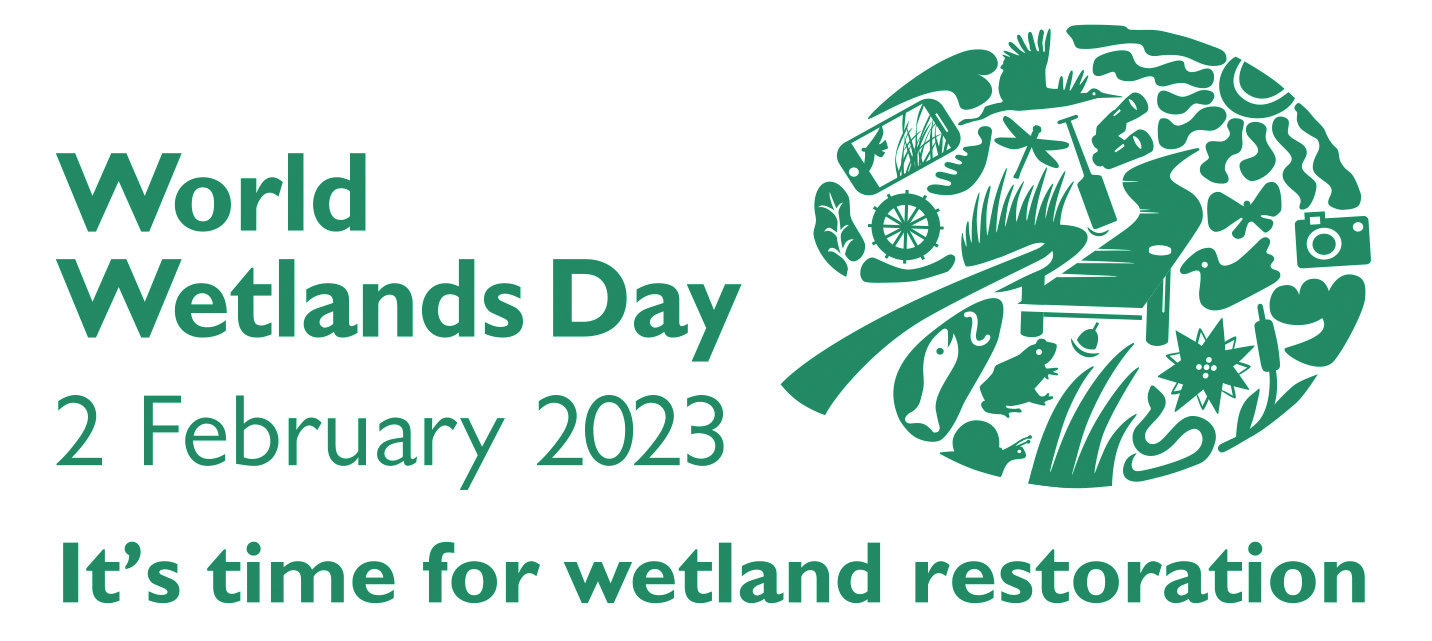
Despite being the world’s most productive ecosystems and crucial to human well-being, wetlands continue to experience extremely high rates of decline and degradation: an estimated 35% of wetlands have been lost since the 1970s. To prevent further losses and secure the necessary ecosystem services that wetlands provide – such as water purification, climate change mitigation, food and building materials, and flood control – the restoration of these important inland water and coastal systems are urgently required.
Ecosystem restoration has increasingly become a priority for scientists, politicians, officials and environmental activists in recent years as a critical approach to curb biodiversity loss and promote resilience to climate change. As such, the UN Decade on Ecosystem Restoration, a 10-year push to halt and reverse the decline of the natural world, was launched in 2020. Through this year’s Wetlands Day theme, the UN Convention on Wetlands is calling for global restoration efforts to include the rehabilitation of wetlands.
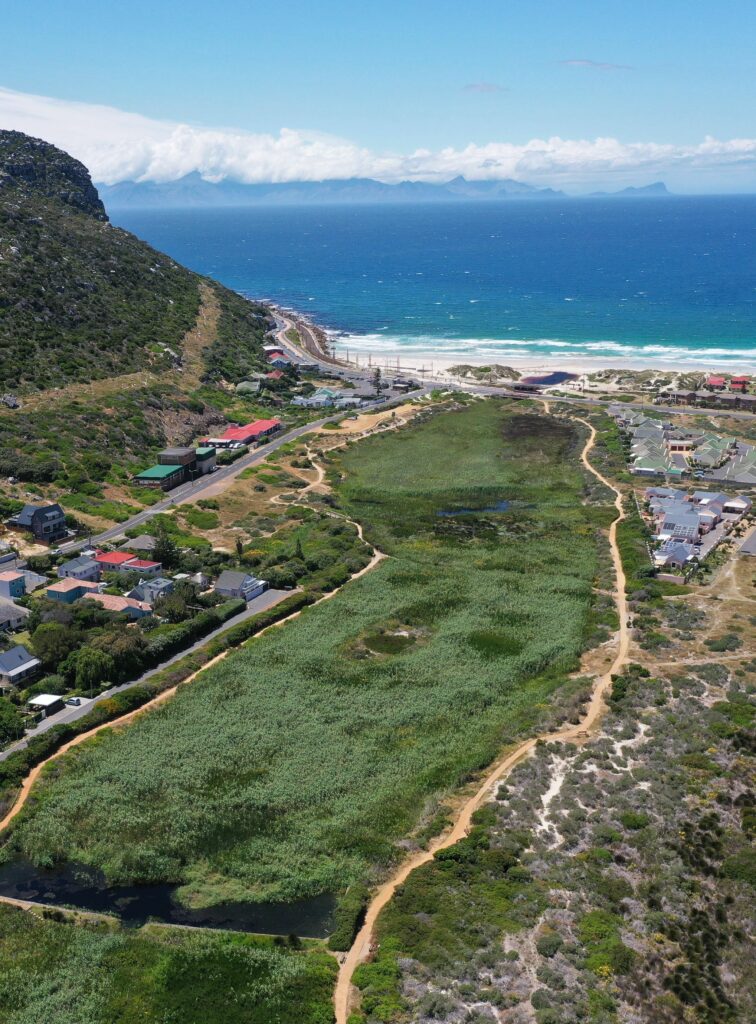
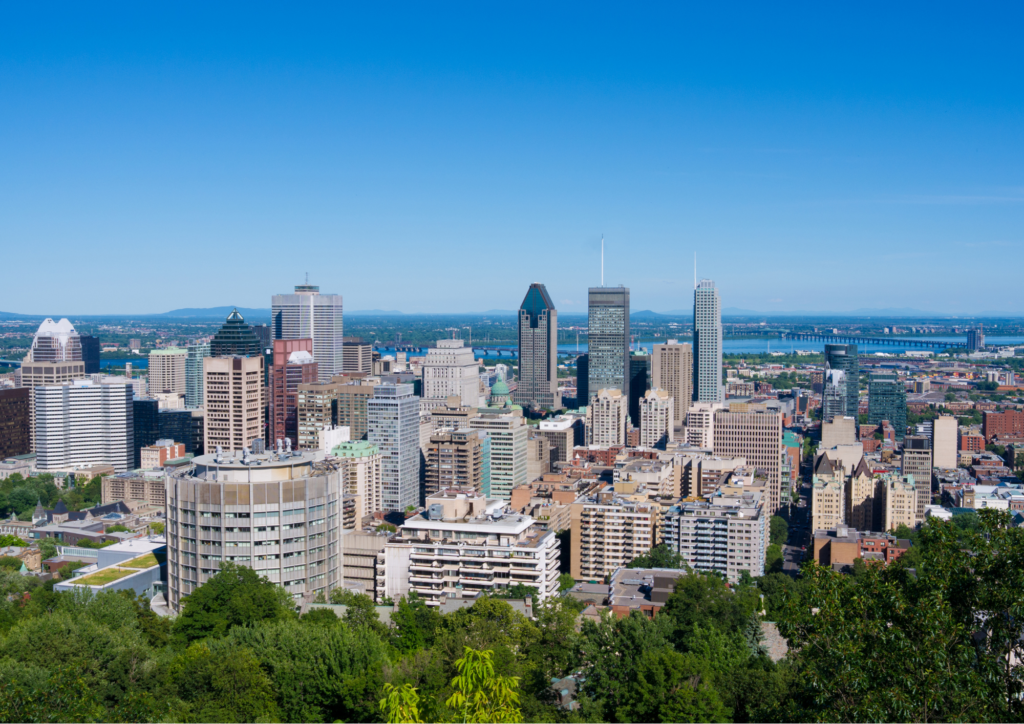
In 2022, urban wetlands were recognized as critical to human well-being at the UN Convention on Wetlands’ 14th Conference of Parties. During Ramsar COP14 in Geneva and Wuhan, Parties were called upon to take appropriate and urgent measures to achieve the goal of halting and reversing the loss of wetlands globally.
Also in 2022, the UN Convention on Biological Diversity’s 15th Conference of Parties in Montreal and Kunming witnessed the adoption of the Kunming-Montreal Global Biodiversity Framework, which includes under its Target 2 an aim that, by 2030, at least 30% of areas of degraded terrestrial, inland water, and coastal and marine ecosystems are under effective restoration.
The loss of wetlands noted above is particularly prevalent in cities. Urban wetlands are vulnerable to the adverse impacts of urbanization as they tend to be undervalued and therefore often converted or used as dumping grounds. However, while the challenges of urbanization to wetland health are profound, so too are the opportunities for wetland restoration.
As part of the newly adopted Kunming-Montreal Global Biodiversity Framework mentioned above, Parties adopted the decision titled Engagement with subnational governments, cities and other local authorities to enhance implementation of the post-2020 Global biodiversity framework and its accompanying revised Plan of Action on Subnational Governments, Cities and Other Local Authorities (2022-2030), which recognizes the vital role that cities and local authorities play in the implementation of the Global Biodiversity Framework – including by restoring urban wetlands and thereby contributing to Target 2. On the CitiesWithNature Action Platform, the CBD-recognized platform for cities to use for monitoring and reporting on their actions for biodiversity, the restoration and protection of urban wetlands can be recorded by Cities under Commitment 1 titled “Protect, Connect and Restore Ecosystems” and specified under two actions: “a) Restore and/or rehabilitate terrestrial, freshwater, and coastal ecosystems” and “(b) Increase protected areas.”
Globally, cities are increasingly acknowledging the importance of protecting and restoring wetland areas. To acknowledge cities’ significant contributions to take care of valuable urban wetlands, the UN Convention on Wetlands established the Wetland City Accreditation Scheme.
The Wetland City Accreditation (WCA) scheme was launched in 2015 – during the Ramsar Convention on the Conservation of Wetlands COP12 in Uruguay – with the aim of improving local authority or authorities’ work in conservation and wise use of wetlands. The accredited Wetland Cities are intended to act as models for the study, demonstration and promotion of the Convention on Wetlands’ objectives, approaches, principles and resolutions. Cities become candidates for accreditation by applying to the official call for applications posted here.
The WCA scheme aims to encourage cities in close proximity to and dependent on wetlands, especially Wetlands of International Importance, to highlight and strengthen a positive relationship with these valuable ecosystems, for example through increased public awareness of their importance and participation in municipal planning and decision-making.
During the Ramsar COP14 in 2022, the second triennium Wetland City Accreditation Awards Ceremony took place to celebrate the accreditation of 25 new cities (listed below). These cities have joined the already existing 18 accredited Wetland cities that have since been tasked to maintain their accreditation.
To further promote the conservation and wise use of urban and peri-urban wetlands, and to share city-level experiences among city leadership, the Roundtable of Wetland City Mayors first took place in 2019, where a Wetland City Network was established to continue the work of the accreditation scheme and enable cities to achieve more and learn from other Wetland Cities. The 2nd Roundtable of Wetland City Mayors will take place in June 2023, in Amiens, France.
The 2022 accredited cities are:
Sackville (Canada)
Sackville was built on/adjacent to saltwater marshes which had been dyked and drained in the 1600s to become freshwater “dykelands”. Since then the Town has undertaken many projects to restore, protect and utilize them, including creating legal restrictions which are supported by laws at all levels of government. The wetlands include the internationally recognized Sackville Waterfowl Park.


Hefei (China)
Hefei has 118,200 ha of wetland area, with a wetland protection rate of 76%. The city has invested in the protection of the Chao Lake area, protecting 10 wetlands covering a total of 100 square kilometers. This has significantly contributed to aquatic ecosystems, water security and quality, and wildlife habitat – up to 562 wetland plant species and 303 bird species. The City’s strategies include nine wetland education centers, wetland protection volunteers and science popularization to enhance residents’ relationship with the wetlands.
Jining (China)
Jining City is known as the “Canal Capital” for its abundant water resources, booming business activities and cultural exchanges. Jining wetlands cover an area of 158,800 ha, with the wetland protection rate reaching 77.38% as a result of the government’s commitment to wetland protection. Nansi Lake and the Grand Canal – designated as a Ramsar site in 2018 – attract millions of migratory birds every year.
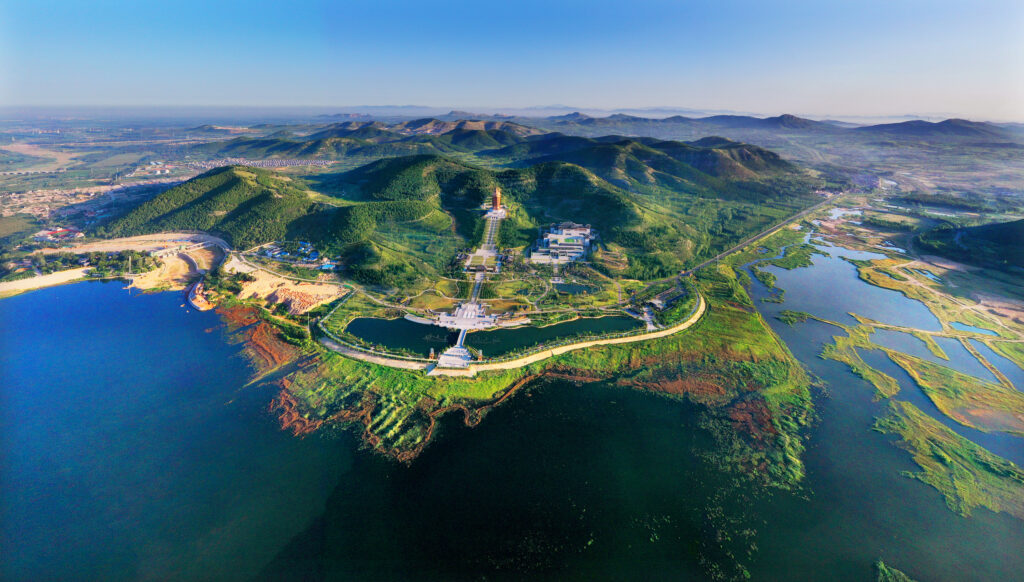

Liangping (China)
Lianping’s rivers, streams, lakes, reservoirs and small wetlands are protected by the City’s strategy of “comprehensive water management, wetlands nourishing the city”, and its adopted model of “small and micro wetlands construction with ecological conservation, pollution control, organic industry, and natural education”, to benefit the lives of communities surrounding the urban wetlands.
Nanchang (China)
Nanchang has a wetland area of 153,000 ha, which provides a major habitat for hundreds of thousands of waterfowl globally, and an important wintering place for Siberian white cranes. The City has protected 68% of its wetlands and restored more than 8,000 ha, enhancing the ecological functions of wetlands, the urban living environment, and the socio-economic development of the city.


Panjin (China)
Panjin’s wetland covers 249,600 ha, accounting for 60.8% of the whole area. Its wetland protection rate is 54.6%, with 124,000 ha of wetlands restored since 2018 – benefiting the value of rice, river crab, tourism and other wetland industries. Panjin’s coastal wetlands are home to 477 species of wild animals – including 78 species of national key protected wild animals – and a stopover or destination for millions of migratory birds, including the Saunder’s Gull, Red-crowned Crane and Western Pacific Spotted Seal.
Wuhan (China)
In Wuhan the Yangtze River (the third largest river in the world) meets its largest tributary, the Han River. Endowed with 165 lakes and 166 rivers, Wuhan has abundant wetland resources and a wetland rate of 18.9%. Ecological restoration is secured through legislative protection, ecological compensation, conversion of fish ponds to wetlands, restoration of degraded wetlands, and public participation.
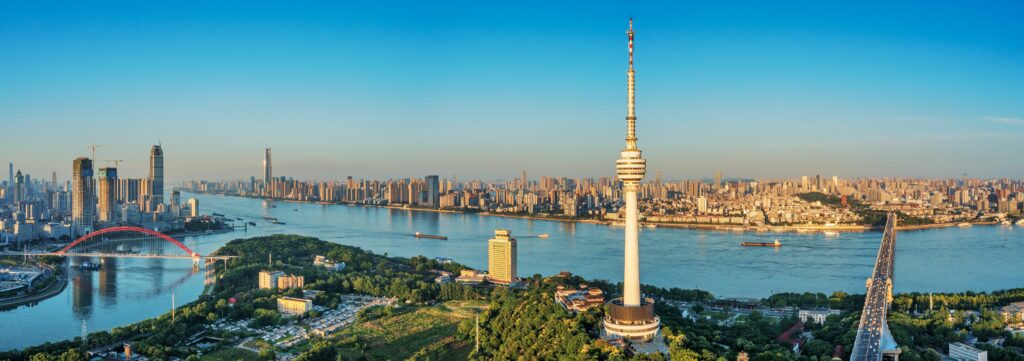
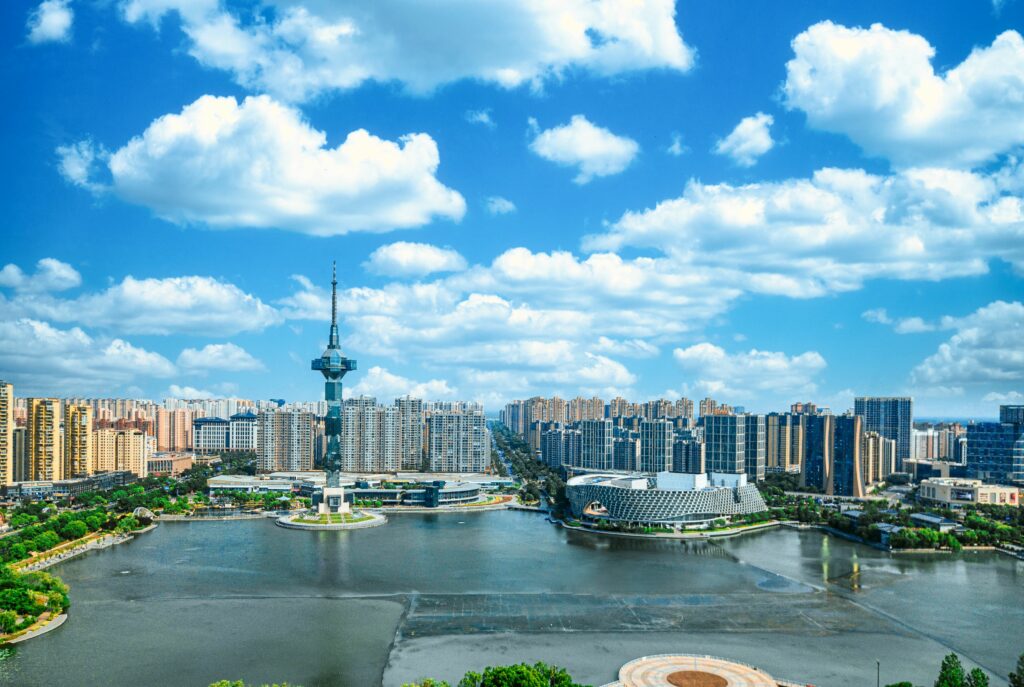
Yangcheng (China)
Yancheng has two Wetlands of International Importance and one coastal wetland World Natural Heritage Site. By 2021, the protection rate of natural wetlands in the city has reached 62%, and the “Yancheng Yellow Sea Wetland ecological restoration case” is renowned for its global nature protection in densely populated and economically developed areas.
Belval-en-Argonne (France)
The Belval-en-Argonne municipality joined forces with several nature protection associations (e.g. Birdlife France), to purchase the ponds of Belval-en-Argonne, which were designated a Regional Nature Reserve in July 2012. Major restoration work on the dykes and sluices has been carried out to better manage the water levels, and a large inventory of ponds and amphibians to create awareness of the site’s biodiversity has been created.
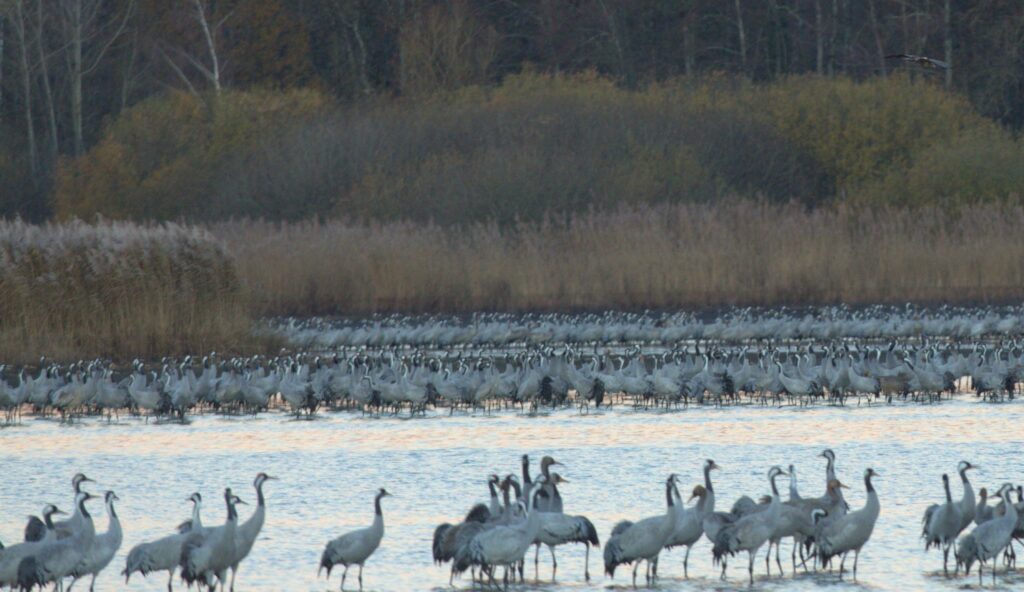
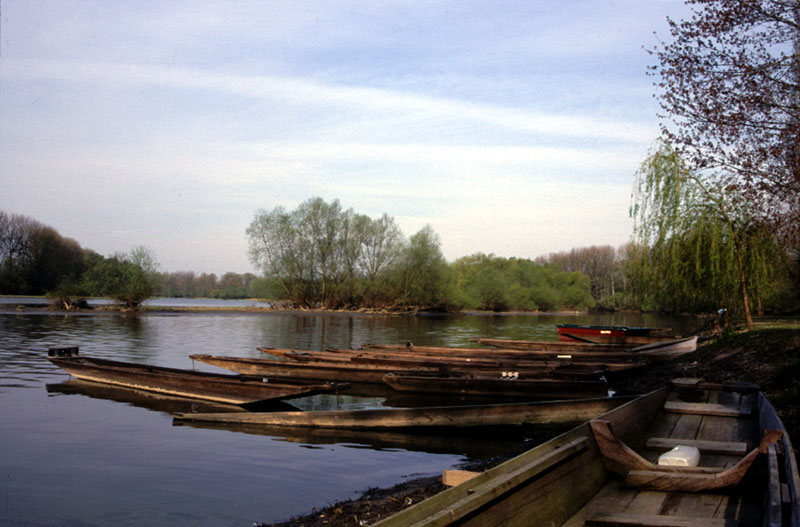
Seltz (France)
Seltz is a European town in the northern Bas-Rhin Department, with a population of 3,400 and home to the Seltz nature reserve: the Sauer Delta. This 486 ha site is remarkable for its botanical richness (including willow beds, mudflats and reedbeds), hydrology and landscapes, as well as ornithology.
Surabaya (Indonesia)
As a result of Surabaya City’s low elevation, many estuarine mangrove and wetland ecosystems have formed, amounting to 1.722,68 km2 of wetland ecosystem (76.51% of the total area 2.251,62 km2). These wetlands are important for bird species, particularly migratory seabirds and shorebirds in the East Asia-Australia Fly Away. Urban planning initiatives, in cooperation with community associations, are addressing challenges such as river and coastal pollution, seasonal water scarcity and urban flooding.
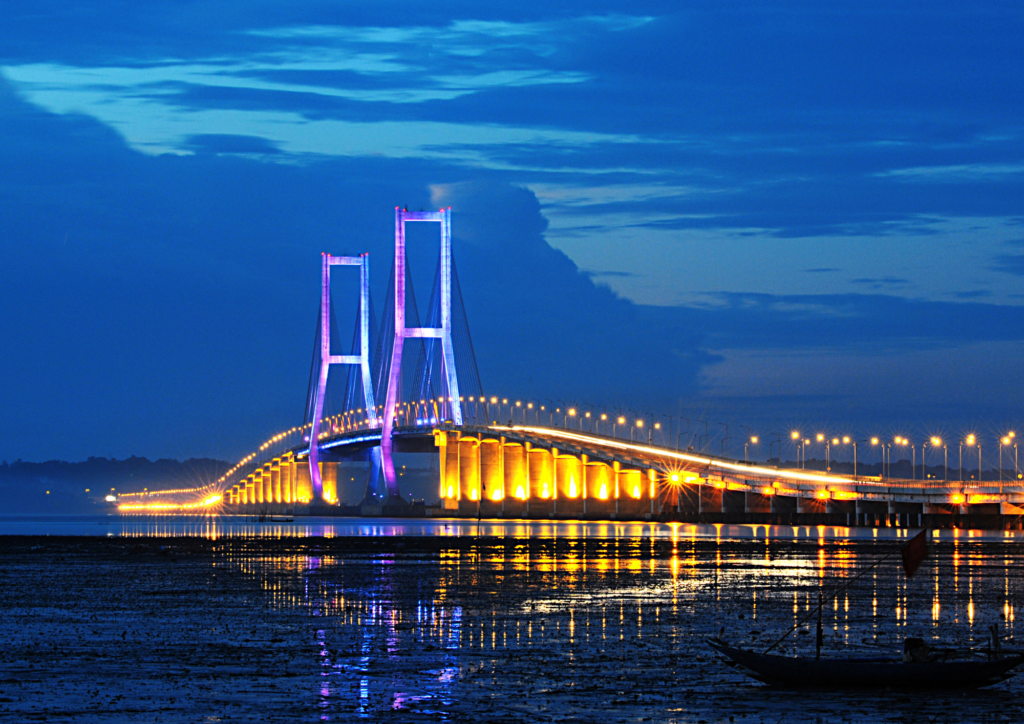
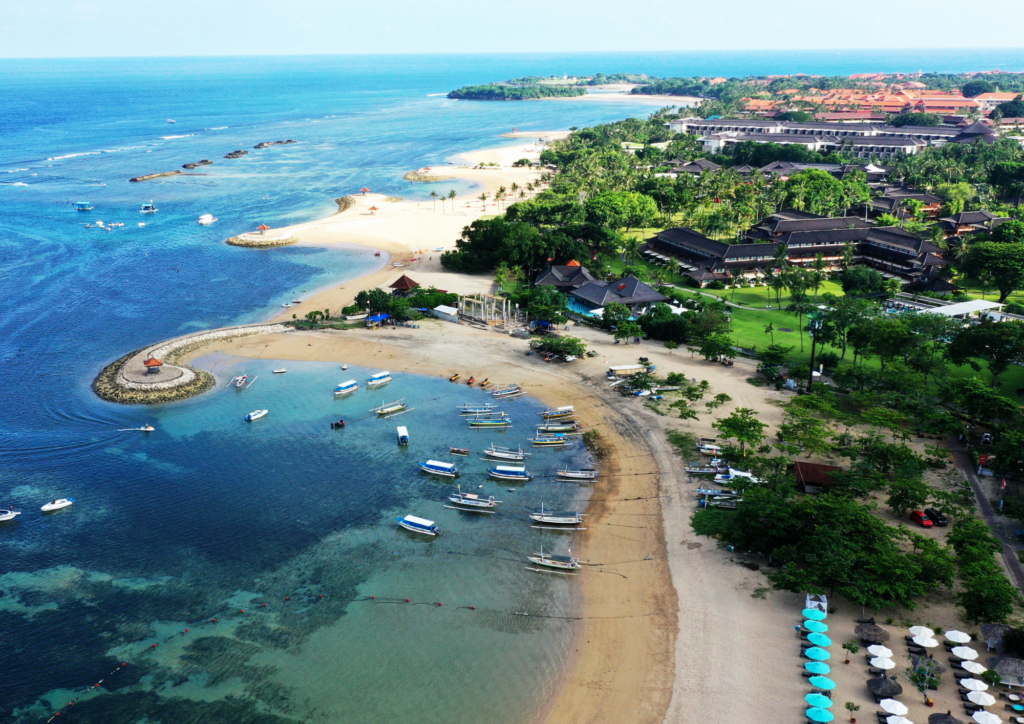
Tanjung Jabung Timur (Indonesia)
Tanjung Jabung is located on the east coast, with its west coast stretching across 12 km of the Sungai Berbak river mouth, and 15 km south of Tanjung Jabung. The city’s mangrove forest fringe ranges from 200-500 m wide and consists mainly of Avicennia marina and Rhizophora species with about 10 species of large waterbirds, including milky storks.
Bandar Khamir (Islamic Republic of Iran)
With the longest wetland coastline in Iran, Bandar Khamir has started a widespread popular movement – comprising events, festivals, educational workshops and numerous learning centers – in recent years for the wise use of the wetland. As a result of increased awareness and education of the value of the wetland and its ecosystem services, the participation and involvement of different groups to protect the wetland has increased.
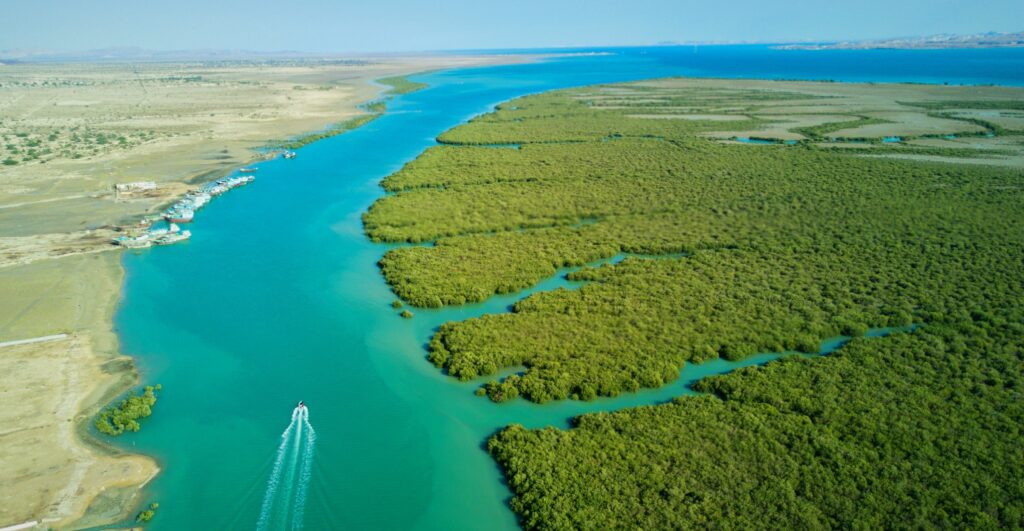
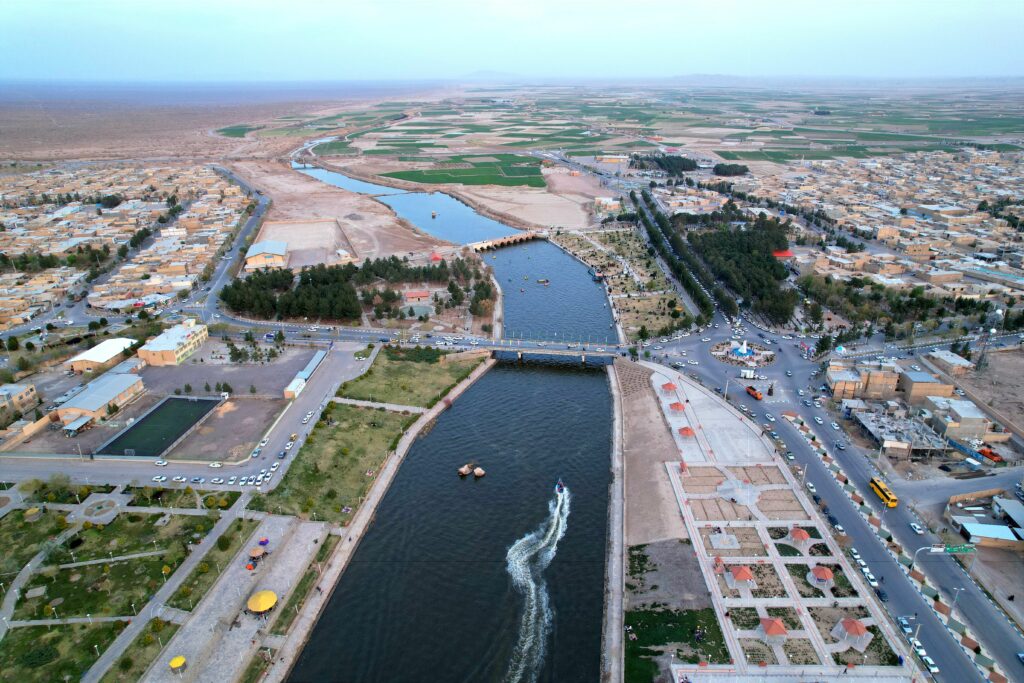
Varzaneh (Islamic Republic of Iran)
Varzaneh city is located 20 km from Gavkhouni International Wetland which is supplied by the ZayandehRud river that passes through the city. Because of the hot climate of the city, the river and wetlands have benefited residents’ livelihoods, including agriculture, animal husbandry and ecotourism.
Al-Chibayish (Iraq)
Many projects implemented in Al-Chibayish city have contributed to the revival and sustainability of its wetlands. These wetlands support infrastructure and basic services for the local population and economy, in addition to its unique scenery and ecotourism services. The marshes also support a unique cultural heritage that is characterized by its residents and their traditional handicrafts, landscapes and biodiversity – such as buffalo and wild birds.


Izumi (Japan)
Izumi City is known as the largest wintering site of cranes in Japan, where more than 10,000 hooded and 2,000-3,000 white-naped cranes migrate every winter. The wintering habitat comprises mainly rice paddies which have been protected by Japanese policies against development. One of the city’s pillars of city planning includes “A city where human happiness and environmental conservation go together”.
Niigata (Japan)
Niigata recognizes the multifaceted benefits of wetlands near the city and involves their citizens in protection activities – particularly for fisheries – such as including school children for environmental education. The Niigata community has a relationship with the waterfowl, such as swans, that roost in the wetlands at night and feed in the rice paddies of the city area during the day.

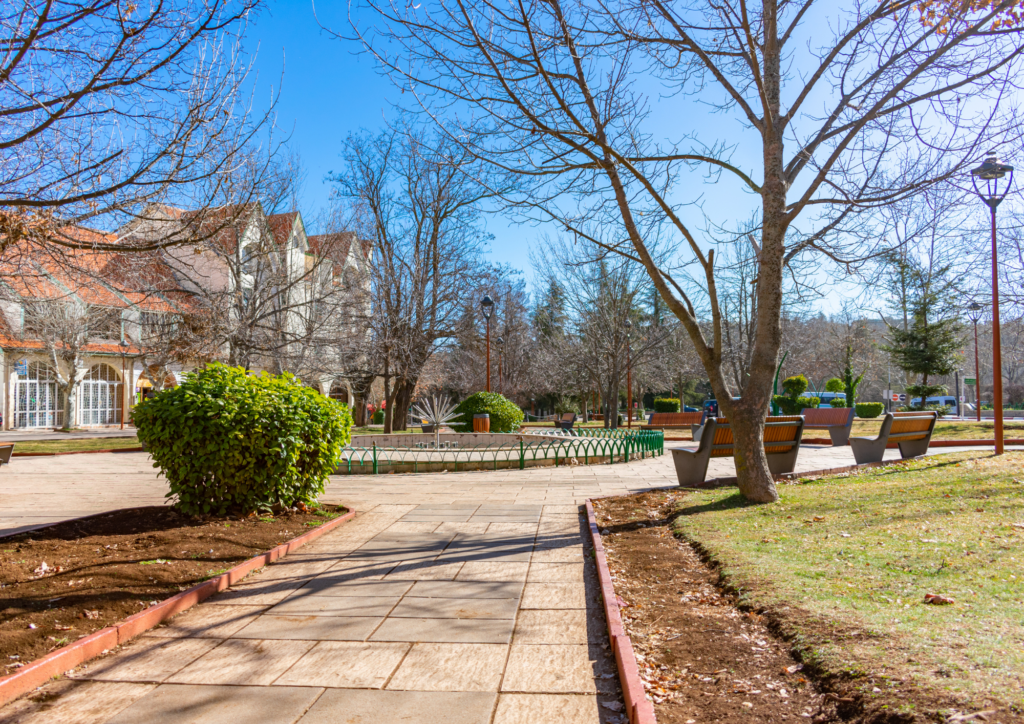
Ifrane (Morocco)
Ifrane is located in the heart of the Atlas Cedar Biosphere Reserve, and considered to be the “ecological capital” of the Kingdom of Morocco. The City is working to conserve its urban wetland ecosystems – Lake Zerrouka, the Aïn Vittel springs and Oued Tizguite – through many national regulatory measures and instruments for the protection of wetlands. With its partners, Ifrane Province is a pioneer in the restoration of wetlands by piloting the “Lake Dayet Aoua restoration project”.
Gochang (Republic of Korea)
There are two Ramsar wetlands in Gochang, both protected under the National Wetlands Protection Act. Gochang has restored the paddy fields since 2017, and restored the brackish water zone between 2016 to 2020. The area is surrounded by ecotourism activities, such as the open market, and educational programs that are creating awareness among the communities of the importance of restoring wetlands.
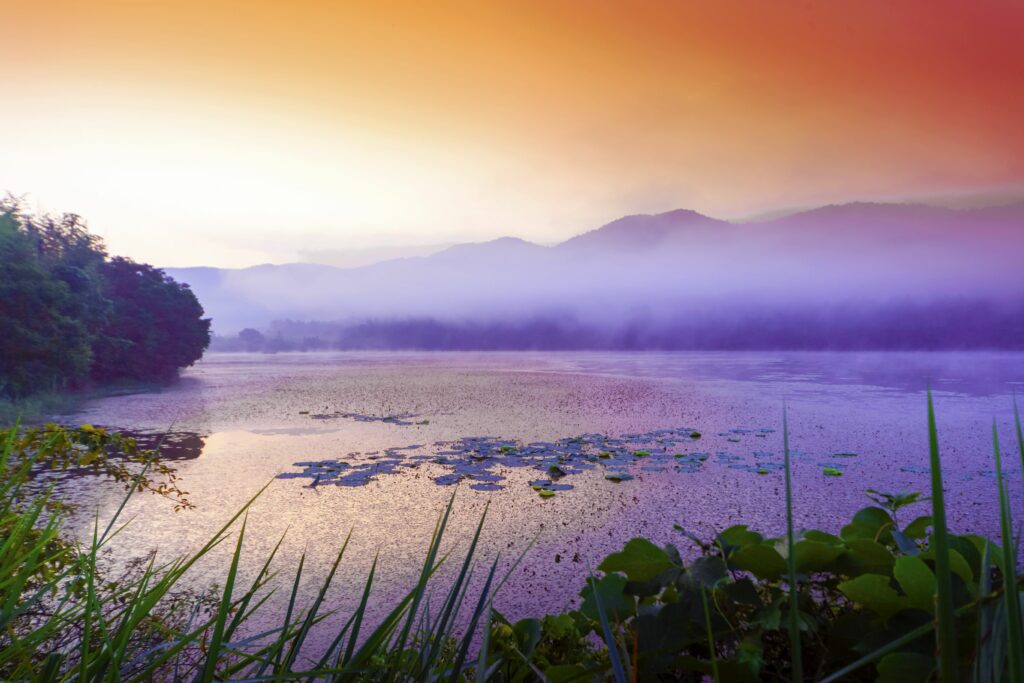
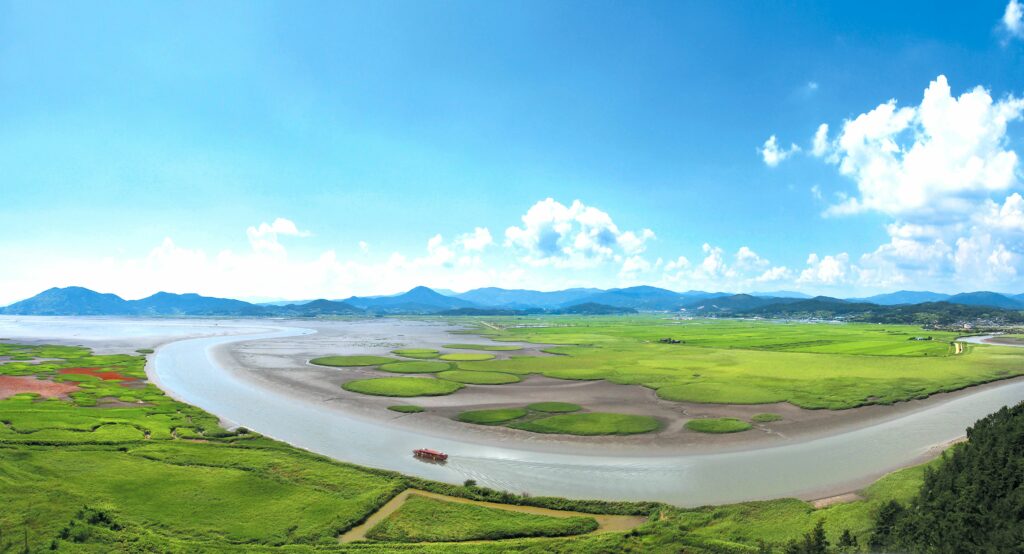
Seocheon (Republic of Korea)
The Seocheon Getbol wetland reserve – a UNESCO World Natural Heritage Site – is a designated migratory route for migratory birds between East Asia and Oceania, and home to 19 endemic species and three endangered invertebrates, supporting 100 species of waterfowl. The Seocheon County Ordinance operates the Wetlands Protection Committee, a public-private joint organization, to systematically preserve and manage wetlands through monitoring, restoration and waste collection.
Seogwipo (Republic of Korea)
The Mulyeongari Oreum Wetland in Seogwipo City is home to 15 endangered species of living organisms. Ecological specialists and local residents in Seogwipo City perform extensive ecological monitoring on a regular basis to protect the Mulyeongari Oreum Wetland.
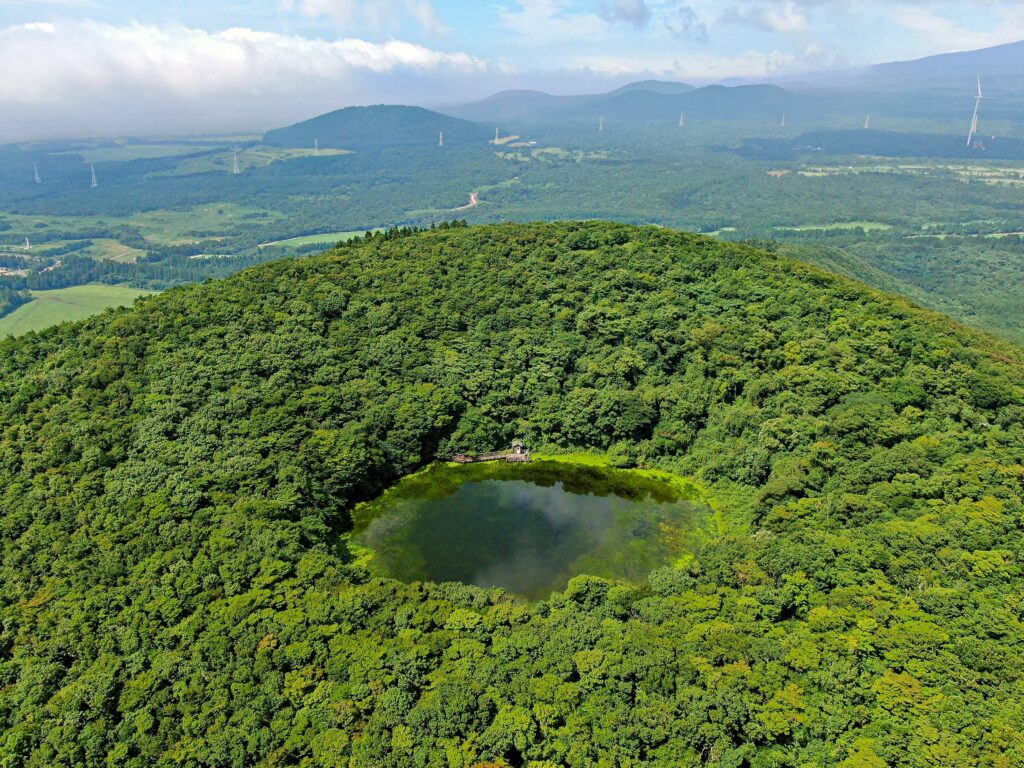
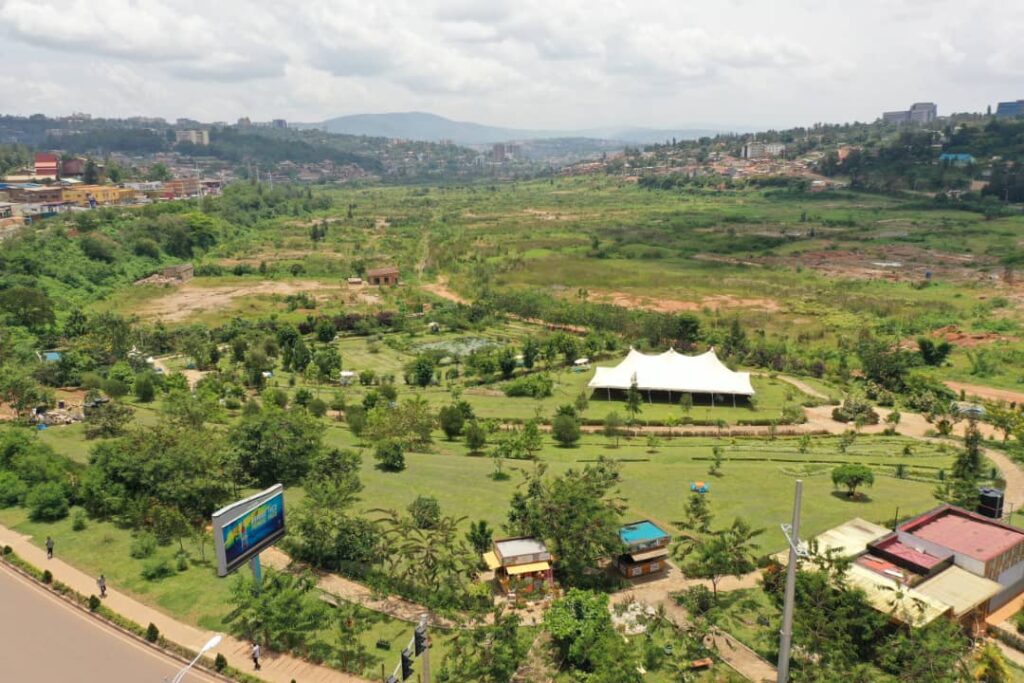
Kigali (Rwanda)
The Kigali Wetlands have been threatened by human activities such as agriculture, human settlements, commercial and industrial activities – decreasing their capacity for flood and pollution abatement. In response, the City is implementing strategic ecological rehabilitation solutions such as the Kigali wetland masterplan, which supports the efficient and sustainable management and use of wetlands. As a result, all business activities inside wetlands were evacuated; Nyandungu wetland (121.7ha) was transformed into a recreational eco-park; and a study to rehabilitate five wetlands that cover 480 ha has been conducted to contribute to its Vision 2050 of developing a Green City.
Cape Town (South Africa)
Cape Town is a coastal city with numerous wetlands and is a recognized global biodiversity hotspot. The City aims to mitigate wetland damage through innovative policies and plans, wetland offset projects, best-practice wetland management and restoration, people and conservation programmes, skills development, job creation, plus the Mayor’s priority water quality programme addressing impacts to and rehabilitation of the City’s larger wetlands.
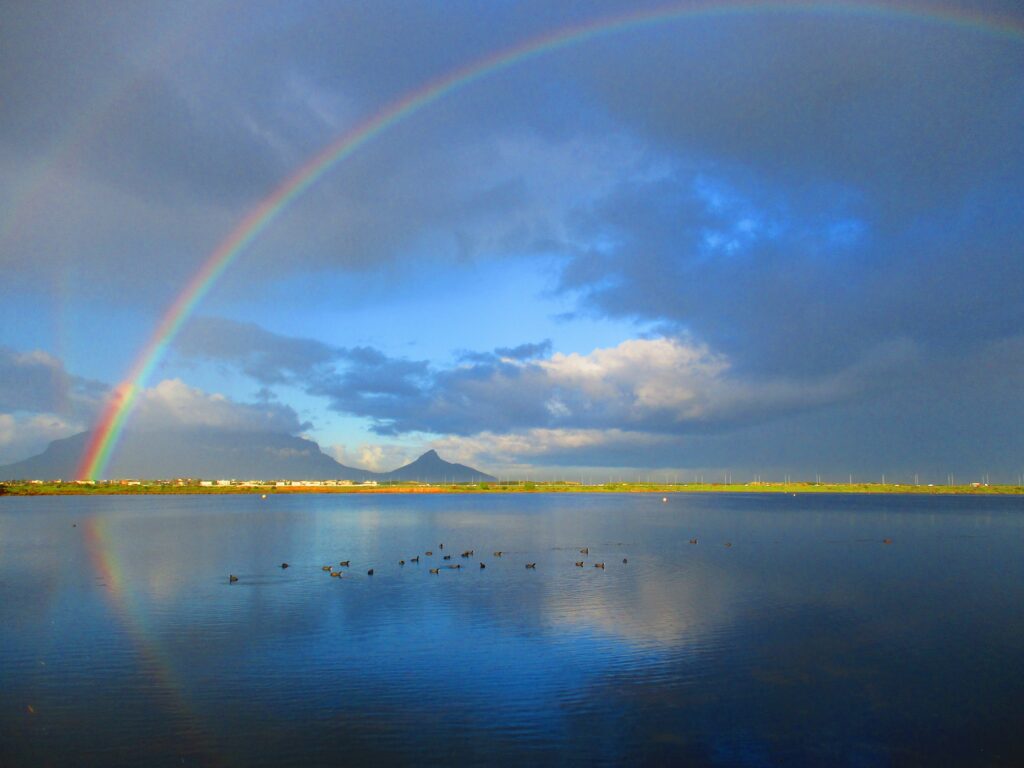
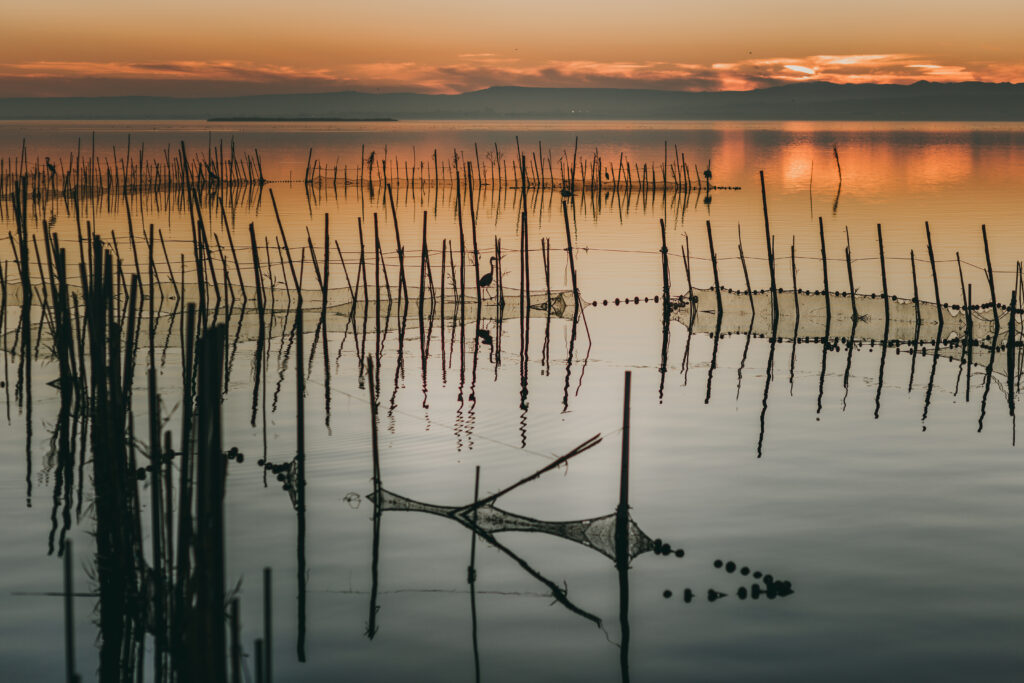
Valencia (Spain)
L’Albufera de València is a wetland culturally linked to the community’s heritage, including traditional fishing and rice cultivation. Since the 1970s, Valencia’s City Council has played a fundamental role in the site protection and planning, which has resulted in the lagoon and coastal forest being declared a Natural Park in 1986. In 1982, the Devesa-Albufera Municipal Service was created, responsible for the development of plans and projects for the conservation and restoration of the wetland.
Sri Songkhram District (Thailand)
The Songkhram River has a basin of 6,473.27 km2 and is an important tributary of the Mekong River. About 54.2% of the overall Songkhram Basin may be classified as “wetlands”, which are significant as a capture fishery providing seasonal employment, income and food to thousands of households. Other products are also sourced from the wetlands by local residents (e.g. mushrooms, bamboo shoots, wild vegetables and reeds). The wetlands, declared as a Ramsar site, are protected as a “community forest” on both sides of the Songkhram River, set up by Thailand’s Royal Forest Department.
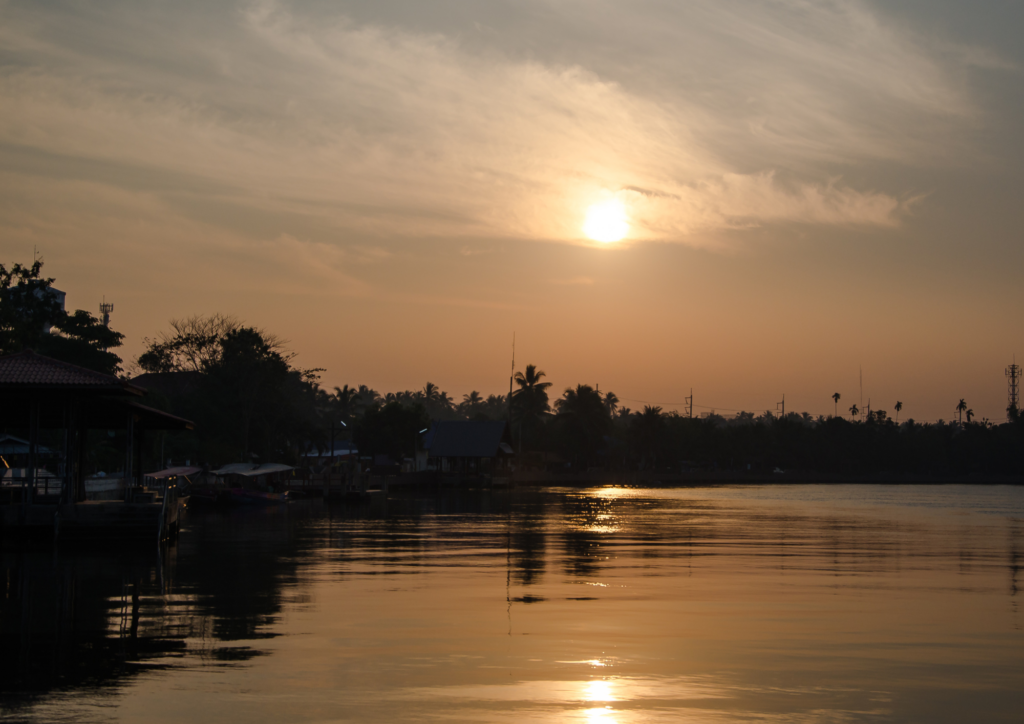
The Independent Advisory Committee (IAC) governs the Wetland City Accreditation Scheme. This committee reviews the Wetland City Accreditation applications from candidate cities and reports its decision to the Standing Committee of the Convention. ICLEI, along the Convention on Wetlands’ International Organization Partners, promotes the Wetland City Accreditation Scheme and local efforts to gain and maintain its branding. Through ICLEI’s city networks and CitiesWithNature platform, it is well positioned to promote the Wetland City Accreditation brand. During the second triennium from 2019 until 2022, ICLEI has been serving as Co-chair of the IAC, 25 more cities were accredited and they received their award during an Award Ceremony at COP14 in Geneva in 2022.

In the build-up to the Convention on Biological Diversity (CBD) COP15 – which will take place in Montreal from 7-19 December 2022 – ICLEI Cities Biodiversity Center, in collaboration with ICLEI’s regional offices, provided capacity-building webinars to demonstrate uploading actions and commitments to the CitiesWithNature Action Platform, recognized in the Plan of Action on Subnational Governments, Cities and Other Local Authorities for Biodiversity (2021-2030).
The road to COP 15 is a crucial moment for local and subnational governments to demonstrate their commitments to actions that will contribute to the successful implementation of the new global biodiversity framework (GBF) and its targets. As a result, the CitiesWithNature Action Platform webinars not only trained cities across the world on using the platform, but also explained the importance of their engagement and participation in the platform in the build-up to COP15.
The CitiesWithNature team that served as recurring speakers in all the webinars are:
Ingrid Coetzee
Director Biodiversity, Nature & Health, ICLEI Africa
Stefania Romano
Senior Professional Officer – Global CitiesWithNature and RegionsWithNature Coordinator: Recruitment and Advocacy
Willemien Calitz
Communications Officer
Jade Sullivan
Professional Officer: Biodiversity, Nature & Health
| USA RO | Speakers: Calyn Hart Program Officer, ICLEI USA |
| Southeast Asia RO | Speakers: Russel James Andrade Biodiversity Focal for ICLEI Southeast Asia; Project Assistant Victorino Aquitania Regional Director ICLEI - Local Governments for Sustainability Southeast Asia Secretariat Dr. Rajan Chedambath Director: The Kochi Municipal Corporation and the Centre for Heritage, Environment and Development Puerto Princesa City Dr. Lena Chan Senior Director of the International Biodiversity Conservation Division, National Parks Board (NParks) of Singapore |
| SAMS & MECS | SAMS (Portuguese) Speakers: Marília Israel de Azevedo Borges Biodiversity Analyst at ICLEI South America Rodrigo Corradi Deputy Executive Secretary at ICLEI South America Oliver Hillel Programme Officer at the Secretariat of the Convention on Biodiversity Bianca Cantoni Coutinho Advocacy Officer at ICLEI South America Jaime Holguin Representative of the Development Bank of Latin America (CAF) Luciano Paes Secretary of Climate of Niterói Gabriel Neves Municipal Secretary of Green, Environment and Sustainable Development Municipal Government of Campinas Leta Vieira Technical Regional Manager: Low-Carbon, Resilience, Biodiversity and Circular Development, ICLEI ICLEI SAMS (MECS) Speakers: Ivana Del Río Technical Secretariat - ICLEI Mexico Maria Mejia Lead - BiodiverCities by 2030 Initiative at Instituto de Investigación de Recursos Biológicos Óscar Figueredo Bucaramanga Metropolitan Area, Colombia Paulina Soto Director of Programmes and Projects Sergio Aranguren Biodiversity Coordinator, ICLEI Braulio Diaz Institutional Relations and Advocacy Regional Manager, ICLEI |
| Oceania RO | Speakers: Steve Gawler Regional Director ICLEI Oceania Cr Amanda Stone Councillor, Yarra City Council, Australia, ICLEI Global Executive Committee Member and ICLEI Oceania Regional Executive Committee Helaine Stanley Program Advisor CWN Academy Nadine Gaskell Biodiversity Coordinator, City of Knox |
| European RO | Speakers: Shreya Utkarsh Officer: Sustainable Resources, Climate and Resilience Gillian Dick Spatial Planning Manager – Research & Development Development Plan Group Neighbourhoods, Regeneration & Sustainability, Glasgow City Council Marta Mansanet Cánovas Policy Officer: European Committee of the Regions Holger Robrecht Deputy Regional Director of Sustainable Resources, Climate and Resilience |
| Africa RO | Speakers: Bronwen Griffiths Head: Sustainable Partnerships & Financing, Spatial Planning & Environment: Environmental Management Department, City of Cape Town Alex Kivumbi Principal Community Development Officer, Makindye Ssabagabo, Uganda |

ICLEI, together with its partners, invites subnational and local governments to Montréal, Québec, Canada for the 7th Summit for Subnational Governments and Cities and its associated Pavilion. The Summit, an official parallel event to the 15th Conference of the Parties (COP 15) to the CBD, will be co-hosted with the Secretariat of the Convention on Biological Diversity (SCBD) and Regions4, along with the host Government of Québec and the City of Montréal. Both the Summit and the Pavilion are financially supported by the Government of Québec as main sponsor.
For the first time at a CBD COP, there will be a dedicated Pavilion, focusing on subnational government and city actions and opportunities. This clearly demonstrates an elevated recognition and the biodiversity community of the significant contributions of local and subnational governments towards the implementation of the global biodiversity framework (GBF).
Image provided by: Ezjay/Shutterstock.com
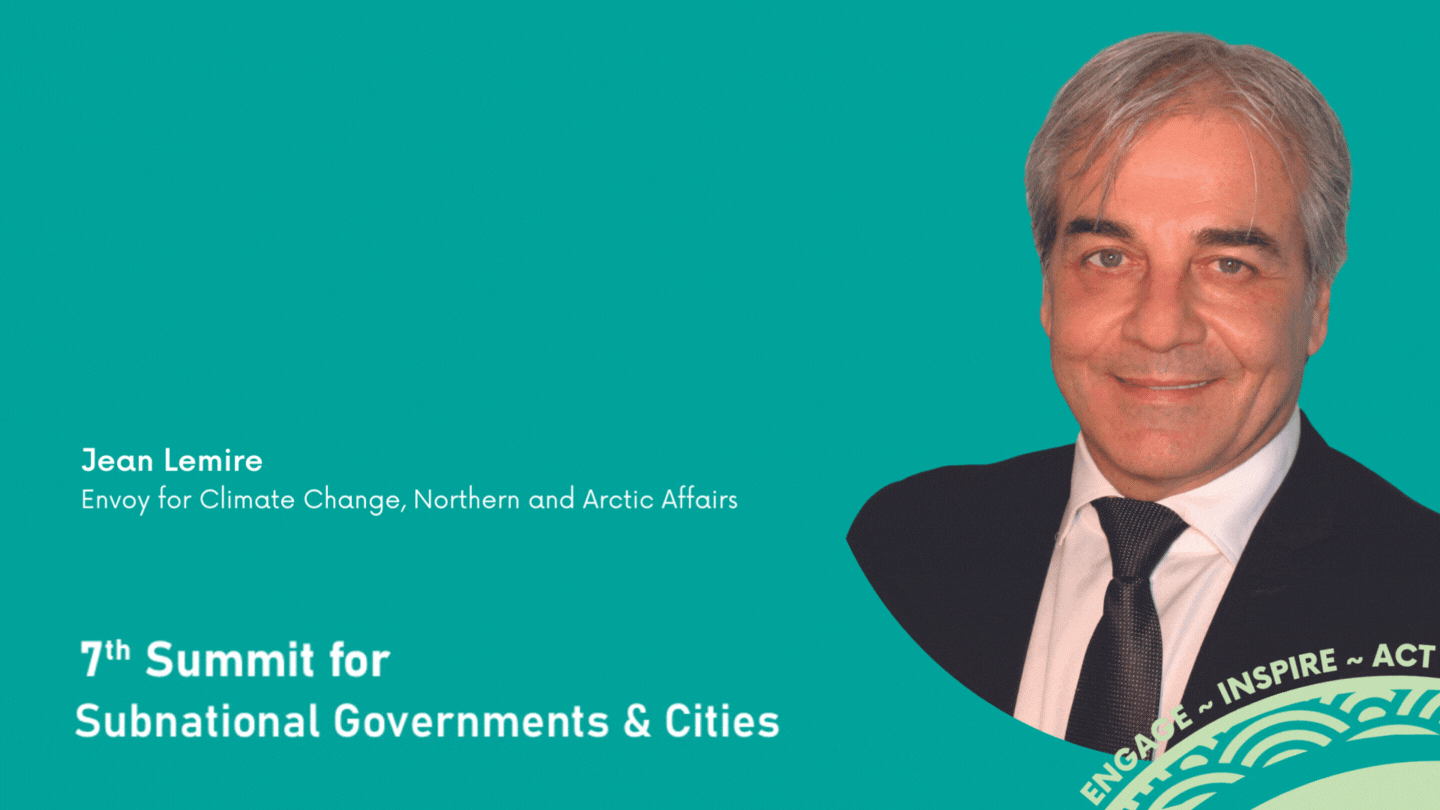
"It is with great pride that we welcome you to Québec for the 15th Conference of the Parties on Biological Diversity. Through its role as coordinator of the Advisory Committee on Subnational Governments and Biodiversity together with Regions4, Québec is committed to doing everything possible to promote the adoption of an ambitious Global Biodiversity Framework which, we hope, will pave the way for a new era of collaboration. We invite subnational you to participate in large numbers in the 7th Summit for Subnational Governments and Cities and to make your voice heard at this historic meeting."
Jean Lemire, Envoy for Climate Change, Northern and Arctic Affairs
The Pavilion program will include multiple events, from 8th to 18th December, during COP 15.
“Cities are essential leaders in the fight against climate change, the protection of biodiversity and the adaptability of our territories. They already experience the impact of environmental issues, they understand the major challenges that lie ahead, as well as the solutions to be implemented. As the mayor of Montréal and ICLEI global ambassador for local biodiversity, I am very happy to welcome the 7th Summit for Subnational Governments & Cities: Taking Action for Biodiversity.”
Valérie Plante, Mayor of Montréal & ICLEI global ambassador for local biodiversity.

This 7th Summit will provide a unique opportunity to address the targets and actions of the new GBF such as reducing threats to biodiversity, meeting people’s needs through sustainable use and benefit-sharing of biodiversity and ecosystem services, as well as implementing local and regional tools and solutions. The Summit is dedicated to taking action and making commitments, with subnational governments and cities sharing and demonstrating inspirational biodiversity initiatives, solutions and achievements, and pivoting combined multi-level ambitions and engagement into measurable actions. The outcome of this historic, action-oriented Summit will be presented formally by the hosts to the CBD COP 15 High Level Segment as a united message from the subnational constituency.

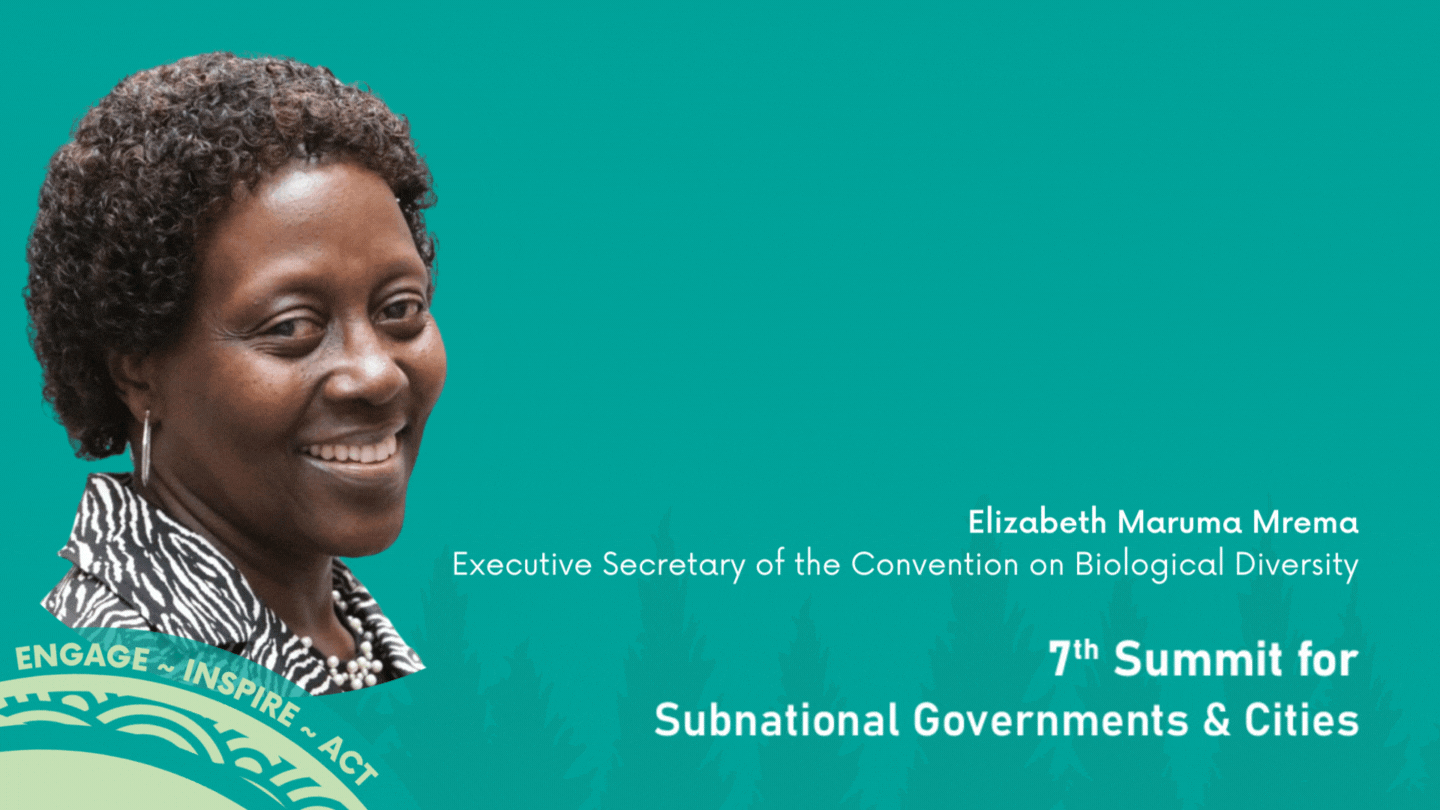
“As we approach COP 15 in Montréal this December, I am encouraged by the decision-makers of such authorities who are transforming the ways in which our economies affect biodiversity and move us towards whole-of-government, whole-of-society, approaches to ensure a sustainable future."
Elizabeth Maruma Mrema, Executive Secretary of the UN Convention on Biological Diversity.
The Summit will announce, solidify and celebrate subnational and local actions for the protection, restoration and enhancement of biodiversity across the world, actions that reconnect communities with nature for a more sustainable future. It will present new projects and multilateral announcements, and profile initiatives such as the global CitiesWithNature and RegionsWithNature partnership, which provide a platform for local and subnational governments to commit and share their ambitious actions and initiatives for and with nature, in measurable ways.
“Our planet can no longer support the inefficient misuse and management of our natural resources. The loss of biodiversity across the globe is inextricably linked to the acceleration of the climate crisis and the nature-based systems we rely on to help sustain our communities and way of life. Local governments will no longer tolerate being forced to confront this climate emergency alone. We should join CitiesWithNature and RegionsWithNature to convene and share our actions across all levels of government. And we should show the leadership needed in this now-or-never moment to safeguard a biodiverse, 1.5-degree world where all life can thrive. Together, we welcome a strong framework coming out of the UN Biodiversity COP15 conference to give us the momentum and guidance to act.”
Mayor Frank Cownie, City of Des Moines, Iowa & President of ICLEI-Local Governments for Sustainability.
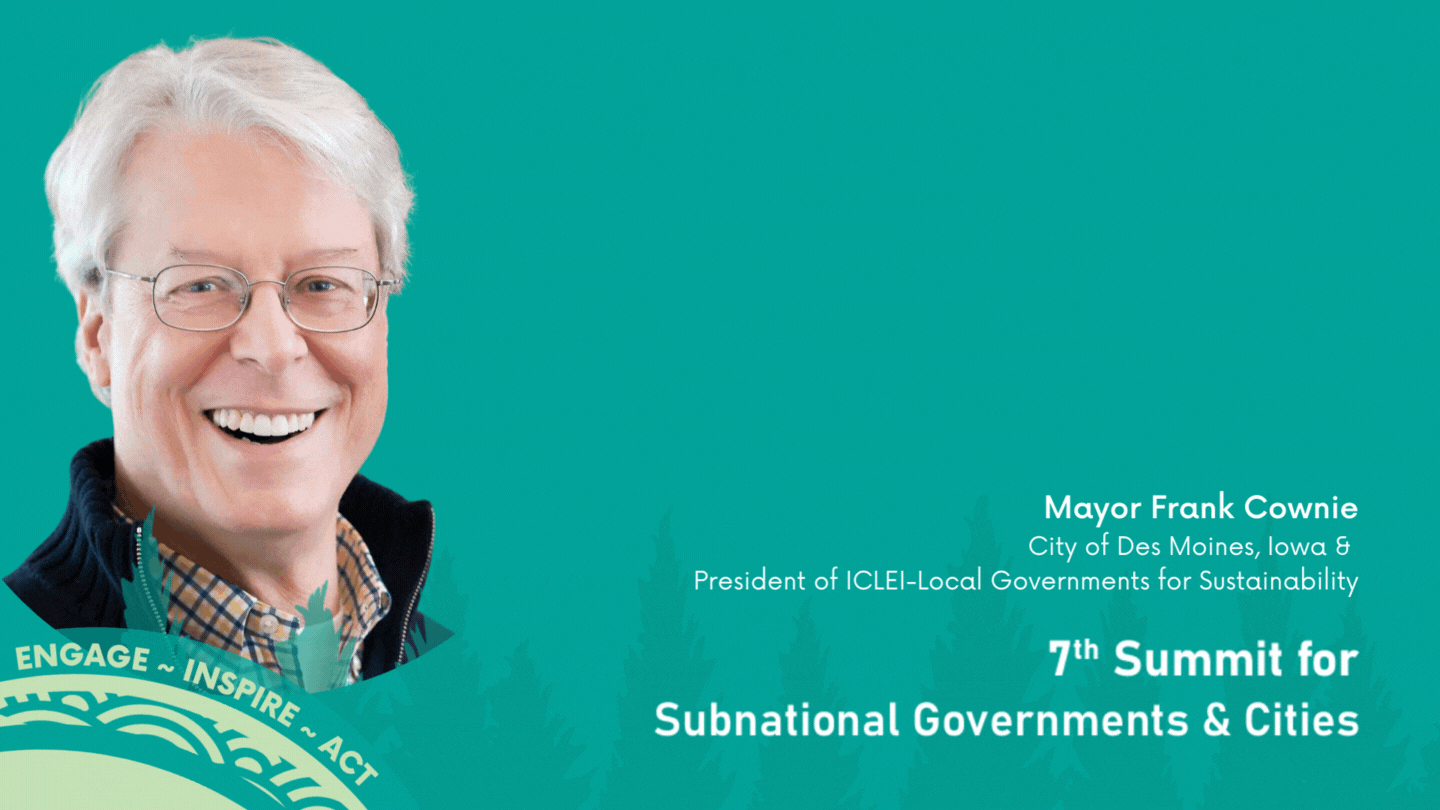
The 7th Global Summit is convened by ICLEI, and co-hosted with the Secretariat of the Convention on Biological Diversity (SCBD) and Regions4, along with the host Government of Québec and the City of Montréal. This milestone Summit and Pavilion are supported by the Government of Québec, as main sponsor, and will welcome Parties, subnational governments, cities, their leaders, networks and partners from across the world to contribute and actively participate – in person or virtually.
COP 15 is hosted by the Government of China, and as the province of Yunnan, Kunming City, and China Environment News, in coordination with ICLEI East Asia Secretariat and the Ministry of Ecology and Environment of China, have contributed to the COP since its first phase, their role is acknowledged as supporting institutions to the 7th Summit.
Summit registrations are open at cbc.iclei.org or email biodiversity@iclei.org for more information.
Images provided by: Ville de Montréal
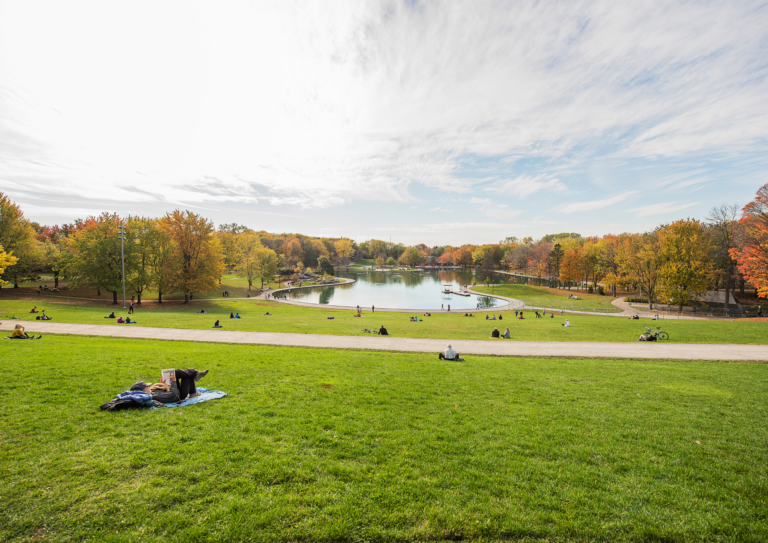

On the road to the Convention on Biological Diversity (CBD) COP15 – which will take place in Montreal from 7-19 December 2022 – ICLEI Cities Biodiversity Center, in collaboration with ICLEI’s regional offices, is providing capacity-building webinars to demonstrate uploading actions and commitments to the CitiesWithNature Action Platform, recognized in the Plan of Action on Subnational Governments, Cities and Other Local Authorities for Biodiversity (2021-2030).
By enabling and supporting local and subnational governments to achieve the global nature goals and their commitments for nature, the Action Platform is intended to align with, and feed into, the National Biodiversity Strategies and Action Plans (NBSAPs) and National Reports to the CBD of countries that have ratified the Convention.
With COP 15 around the corner, it is a crucial moment for local and subnational governments to demonstrate their commitments to actions that will contribute to the successful implementation of the new global biodiversity framework (GBF) and its targets. As a result, our Action Platform demonstration webinars aim to assist cities worldwide with using the tool as optimally as possible.
We have set up a range of webinars by region, as shown in the table below. For more information, contact the ICLEI Regional Officer of your region, as indicated in the table.
We welcome you to participate in the webinar and join the concerted efforts for living in harmony with nature.
| USA RO | Kale Roberts - kale.roberts@iclei.org Calyn Hart - calyn.hart@iclei.org Anne Marie Cleary Rauker - am.clearyrauker@iclei.org October 26, 5.30 - 7.00pm SAST time | 11.30am (New York time) |
| Southeast Asia RO | Russel James Andrade - russel.andrade@iclei.org October 21, 8.30am (CEST time) | 2.30pm (Manila time) |
| South Asia | Monalisa Sen - monalisa.sen@iclei.org |
| SAMS & MECS | SAMS, Brazilian Municipalities Bráulio Dias - braulio.diaz@iclei.org Leta Vieira - leta.vieira@iclei.org Marília Israel - marilia.israel@iclei.org Bianca Cantoni - bianca.cantoni@iclei.org One webinar with SAMS - only Portuguese speaking municipalities October 13, 3 - 4.30pm CEST | 10 - 11.30am (Brasília) SAMS and MECS for Spanish speaking municipalities Ecuador, Colombia, Amazonian areas, Perú, Mexico Bráulio Dias - braulio.diaz@iclei.org Leta Vieira - leta.vieira@iclei.org Marília Israel de Azevedo Borges - marilia.israel@iclei.org Bianca Cantoni - bianca.cantoni@iclei.org Sergio Aranguren - sergio.aranguren@iclei.org Ivana del Río Benítez - ivana.del.rio@iclei.org October 25, 4.00 - 5.30pm CEST time | 10 - 11.30am (Mexico time) |
| Oceania RO | Steve Gawler - steve.gawler@iclei.org October 19, 7.30 am SAST time | 4.30 pm AEST |
| European RO | Shreya Utkarsh - shreya.utkarsh@iclei.org Alice Reil - alice.reil@iclei.org October 18, 2 - 3:30pm CET |
| Canada RO | Megan Meaney - megan.meaney@iclei.org Anne Marie - anne-marie.legault@iclei.org November 30, in English 7 - 8.30pm SAST November 29, in French 7 - 8.30pm SAST |
| Africa RO | Tarryn Quayle - tarryn.quayle@iclei.org Uganda, Kisumu (Kenya), Ghana (Cape Coast City) and Quelimane and Nacala in Mozambique Paul Currie - paul.currie@iclei.org Madagascar Kate Strachan - kate.strachan@iclei.org Mozambique Nelson de Lamare - nelson.de.lamare@iclei.org Senegal and Burkina Faso Ernita Van Wyk - ernita.van.wyk@iclei.org Tanzania Vanessa Tshite - vanessa.tshite@iclei.org Bongiwe Simka - bongiwe.simka@iclei.org Sierra Leone November 2, 2 - 3.30pm SAST time |
| East Asia RO | Shu Zhu - Shu.Zhu@iclei.org Ge Liu - ge.liu@iclei.org |
| Japan | Togo Uchida - togo.uchida@iclei.org Tomoya Taniguchi - Tomoya.Taniguchi@iclei.org |
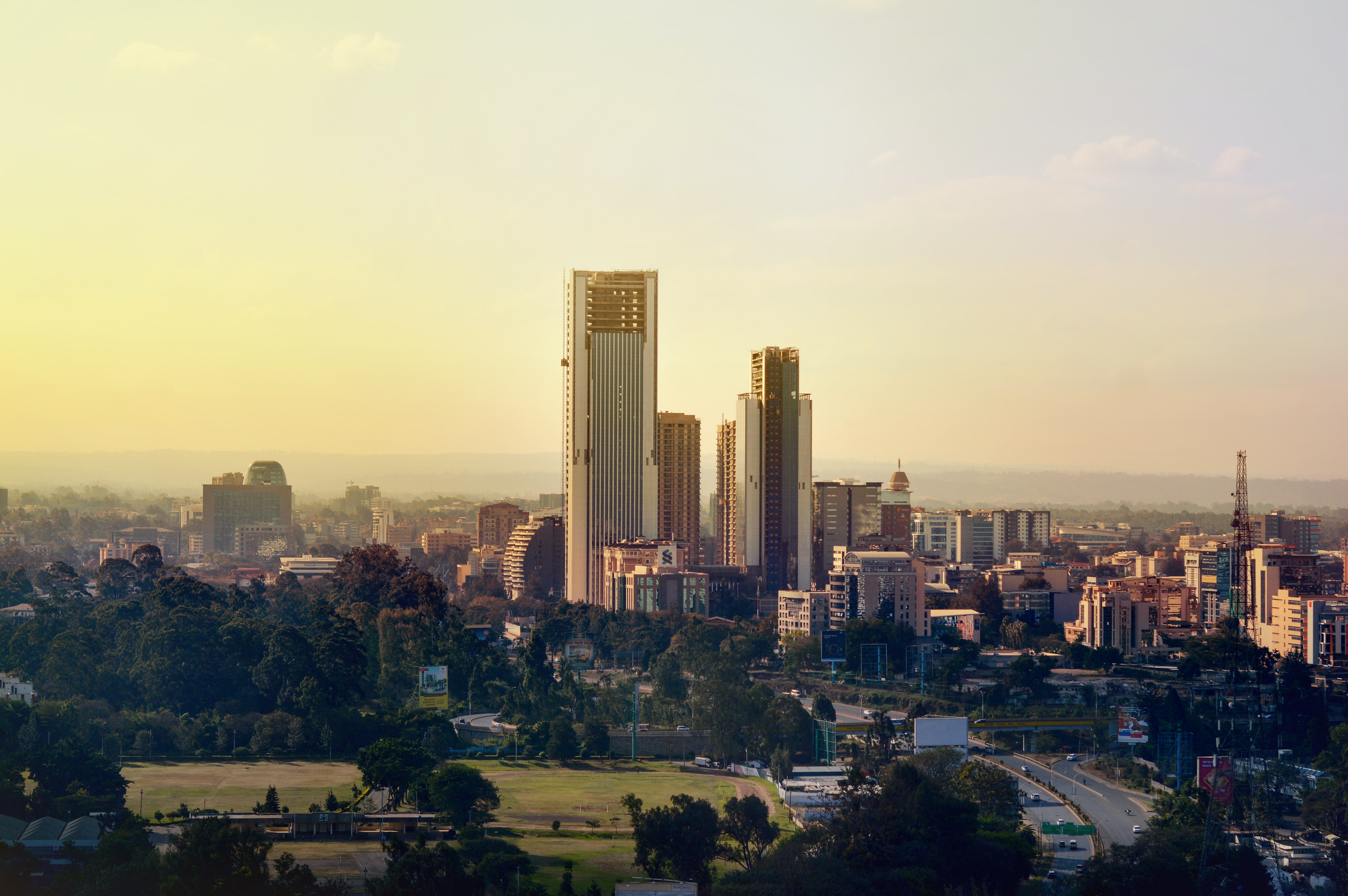
Parties to the UN Convention on Biological Diversity (CBD) advanced a global plan at the fourth Open Ended Working Group (OEWG-4) meeting in Nairobi, Kenya from 21-26 June to bend the curve on biodiversity loss. This Global Biodiversity Framework (GBF) is expected to be adopted at the CBD COP 15 in Montreal, Canada – under the Chinese presidency – in December 2022.

The CBD is the only Rio Convention that has a systematic and comprehensive mechanism for multilevel governance that provides a framework for local and subnational governments to support Parties in reaching global and national biodiversity targets.
Delegates worked on the text from the OEWG-3 meetings in Geneva in March, and rationalized parts of it, achieved consensus on several targets, and proposed diverse options for large parts of the framework. Parties set out their ambitions with respect to the goals of the framework, and refined the essential targets related to conservation, sustainable use, and benefit-sharing. They worked to develop a plan for resource mobilization and other means of implementation and highlighted the contribution of nature to climate change mitigation and adaptation.
Parties also charted the pathway for an agreement on the sharing of benefits from Digital Sequencing Information on genetic resources. Their discussions further strengthened the role of Indigenous peoples, local communities, women, youth, and other stakeholders and to ensure that all voices will be heard, and no one will be left behind.
Although discussions covered the entire framework text – which includes four goals and 23 proposed targets – four important goals of the framework (A through D) were a subject of intense discussion:
Goal A – protecting biodiversity at all levels and preventing extinctions;
Goal B – ensuring that biodiversity can meet people’s needs and support their human rights;
Goal C – benefits from the use of biodiversity and genetic resources are shared with equity and the traditional knowledge and rights of Indigenous and Local Communities are respected; and
Goal D – adequate level of the means of implementation are enabled, including financial resources, capacity building and other supports to action.
I want to thank the Parties for their hard work, their commitment to consensus, and honest engagement in these negotiations. These efforts are considerable and have produced a text that, with additional work, will be the basis for reaching the 2050 vision of the Convention: a life in harmony with nature. I call upon the Parties, in the next months, to vigorously engage with the text, to listen to each other and seek consensus, and to prepare the final text for adoption at COP 15.
~ Elizabeth Maruma Mrema, Executive Secretary of the Convention on Biological Diversity Tweet

The Local and Subnational Major Group was represented in-person by ICLEI with Ingrid Coetzee heading the delegation, and the Advisory Committee on Subnational Governments for Biodiversity, represented by a delegation from Quebec Province comprising Assistant Deputy Minister Jacob, Martin Malus – head of the delegation – Jean Lemire, and Rachel Levesque. Similar to previous CBD post-2020 meetings, ICLEI coordinated the delegation.
While there are still important elements that require additional work and consultation with the capital to further streamline texts, the Nairobi negotiations represented a good outcome for the local and subnational major group. These outcomes include:
Despite the important contributions of OEWG-4, a considerable amount of work will be required to advance the text for final high-level consideration by the Parties at COP 15. The OEWG-4 Meeting agreed to develop a path forward that includes the engagement of all regions preparing for talks involving all Parties immediately before the second part COP 15. These gatherings – culminating in OEWG-5 – would prepare a text for final negotiation by Ministers and their delegations at the second part of COP 15.
The relocation and new date for COP 15 Part 2 was announced during the opening plenary, following consultations between the Bureau, the Government of China as COP President, the Secretariat and the Government of Canada as host of the Secretariat. COP 15 Part 2 will be held in Montreal, Canada at the seat of the Secretariat, from 5 to 17 December 2022. China, as COP 15 President, will continue to preside over the Meetings, with the logo and the theme of COP 15 maintained. China will also convene the High-Level Segment and lead the facilitation of negotiations.
COP 15 and the 7th Global Biodiversity Summit of Cities and Subnational Governments will be a global milestone to welcome a stronger contribution of local and subnational governments in the post-2020 GBF. It will be a strategic and historic moment for the local and subnational major group, which is calling for CBD Parties to adopt a renewed decision on engagement with subnational governments, cities and other local authorities to enhance implementation of the post-2020 GBF, and its Plan of Action on Subnational Governments, Cities and Other Local Authorities for Biodiversity (2021-2030). No information or decision has been communicated around the status of official parallel events, including the 7th Cities Summit, but announcements will follow shortly based on discussions between the SCBD and the Canadian government.

For years, the story of cities has been a tale of attempting to carve out a place for humans outside of nature, a model that has exacerbated our global environmental challenges. Urban areas are perceived as drivers of environmental degradation, nature loss, climate change, and pollution. For cities to make peace with nature and to achieve the goals of the Convention on Biological Diversity (CBD), we need to design and redesign our cities and urban infrastructure with nature in mind.
Luckily, in recent years we have recently seen a recognition of the value of nature and biodiversity in cities, rural-urban linkages and reduction of urban sprawl. Since the 2016 HABITAT III conference, urban-rural linkages have emerged as one of the vibrant means of implementing the New Urban Agenda. Following this, UN Agencies have joined forces to help (re)establish a healthy relationship between urban environments and the ecosystems they are part of.
At the World Urban Forum (WUF), UNEP and the CBD Secretariat (SCBD) collaborated in an event with UN Habitat, FAO and ICLEI to discuss how effective cooperation between UN Agencies can support enhanced urban-rural governance and nature protection. The results of this roundtable will feed into the agenda of the 7th Summit of Cities and Sub-national Governments, which will be held in conjunction with the 15th Conference of the Parties (COP 15) to the CBD in Montreal, Canada in December 2022.

The UN Ocean Conference, co-hosted by the Governments of Kenya and Portugal, took place between 27 June and 1 July 2022 in Lisbon, Portugal, and culminated in delegates adopting a political declaration titled ‘Our Ocean, Our Future, Our Responsibility’.
The conference brought together national and local governments, UN agencies, and multiple stakeholders across different sectors to explore and identify solutions aimed at finding major structural transformations and common shared solutions, to be anchored in the SDGs.
Under the theme ‘Scaling up ocean action based on science and innovation for the implementation of Goal 14: stocktaking, partnerships and solutions’, discussions focused on leveraging interlinkages between Sustainable Development Goal 14 (SDG 14 – Conserve and sustainably use the oceans, seas and marine resources for sustainable development) and other SDGs towards the implementation of the 2030 Agenda for Sustainable Development. Throughout the conference, the linkages between SDG 14 and goals related to clean water and sanitation, poverty, food security, health, women, decent work, climate action, cities, terrestrial ecosystems, and partnerships were emphasized.
Jessie Turner, Director of the International Alliance to Combat Ocean Acidification (OA Alliance) captured the importance of urgent action for oceans: “When talking about climate change impacts on our ocean, we must be clear that while we don’t know everything, we know enough to act. We know enough to begin prioritizing and exploring the key questions that are most important to policy makers, seafood industries and coastal communities. And the good news is…we have lots of existing frameworks across different scales of governance that can be leveraged to take up this work.”
ICLEI – Local Governments for Sustainability and ICLEI’s Cities Biodiversity Center was represented by Kate Strachan – Manager, Climate Change Resilience, ICLEI Africa, and Stefania Romano – Global Coordinator for CitiesWithNature and RegionsWithNature, Recruitment and Advocacy.
During an interactive dialogue titled ‘Leveraging interlinkages between Sustainable Development Goal 14 and other Goals towards the implementation of the 2030 Agenda’, ICLEI emphasized the need for cities to learn from one another and apply these lessons and practices to protect, manage and restore vulnerable urban coastal ecosystems. To achieve this, CitiesWithNature and RegionsWithNature are international partnership initiatives providing a platform to connect local and subnational governments globally with NGOs, experts and communities to act for nature.
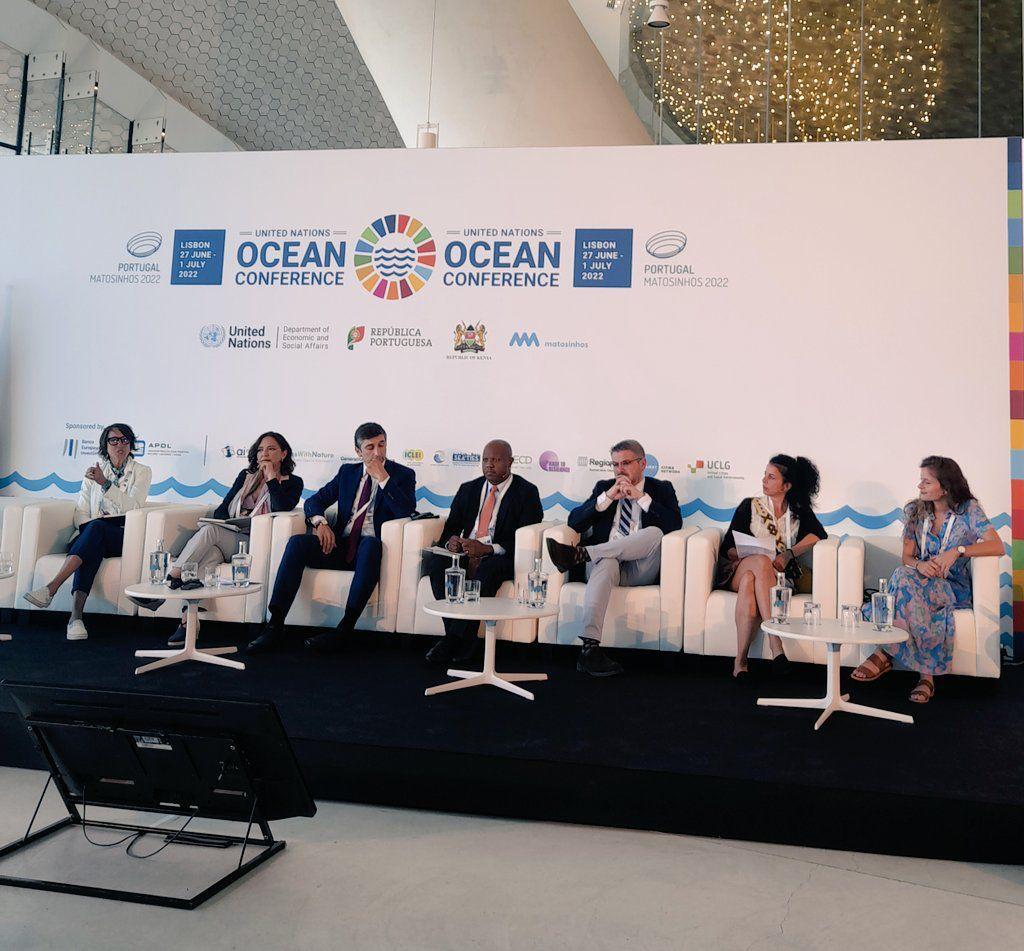

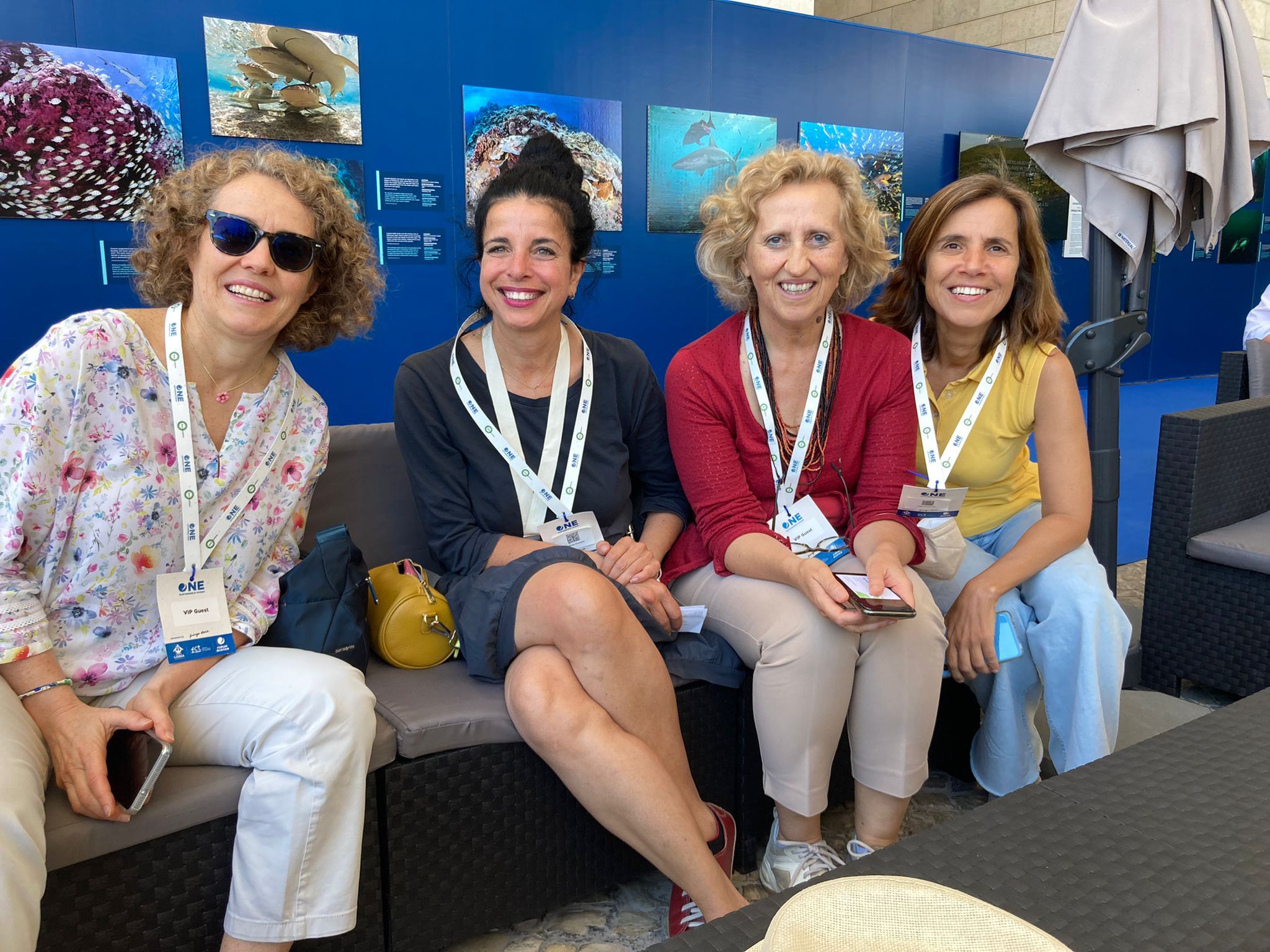
By 2025, nearly 6 billion people will live within 200 km of a coastline. Population growth and climate change-related impacts are increasing coastal risks and degrading coastal ecosystems upon which millions depend. Climate change impacts also compound existing pressures, such as pollution from land-based sources, ocean acidification and overfishing. Coastal cities and regions have unique opportunities to mobilize and demonstrate leadership in taking action to protect our ocean and ensure that the ocean and its accompanying coast are sustainably managed.
“It has never been as urgent as it is today to restore damaged ecosystems,” Stefania said. “SDG 14 offers a great opportunity to advance ocean sustainability globally and address current and emerging threats.” The goal is underpinned by targets addressing the conservation and sustainable use of the ocean, seas and marine resources – including coastal zones – and capacity building for ocean governance. In addition, SDG 14 supports the achievement of SDGs related to poverty alleviation, food security, sustainable blue/ocean economy, and climate change.
ICLEI was involved in a number of sessions and played a role in bringing to the forefront the role of subnational governments in ocean governance. As evident during the conference, both national and subnational governments are leading the way, taking domestic and international actions that expand climate-ocean policy and financing for this work.
Organizations and partnership initiatives such as ICLEI, CitiesWithNature and RegionsWithNature can facilitate learning from coastal city leaders, while simultaneously seeking deeper integration across climate, ocean and biodiversity commitments. These efforts will advance actions that address climate change, support food security and sovereignty, and increase resilience of marine ecosystems, economies, and communities.
Despite the delays in pivotal ocean and climate convenings and benchmarks as a result of Covid-19 restrictions, the UN Oceans conference sparked momentum once again, through the notable outcome of the 2022 UN Oceans Conference – the ‘Our Ocean, Our Future, Our Responsibility’ declaration.
Prior to the official Conference, a Special Event on ‘Localizing Ocean Action’ was held in Matosinhos (Porto) on 25 of July, convened by the co-hosts of the 2022 UN Ocean Conference, together with the City of Matosinhos, and organized in collaboration with UN DESA, UN Global Compact, the Climate Champions Team, the Global Taskforce of Local and Regional Governments, ICLEI, Regions4 Sustainable Development, Ocean & Climate Platform (OCP), United Cities and Local Governments (UCLG), Resilient Cities Network, the International Association of Cities & Ports (AIVP) and OECD. The special session highlighted urban-ocean linkages, specifically around marine plastic pollution, blue finance, local community development, human rights-based approaches towards transformation, and SDG 14 and the Post-2020 Global Biodiversity Framework. The special event also covered the role of local and regional governments to engage in global efforts and decisions to protect the ocean and maritime resources. The outcomes from the special event were conveyed during the main UN Ocean Conference.
ICLEI and the OCP co-organized Local Ocean Action Session 1, titled ‘The clock is ticking: How can coastal cities build resilience and incorporate nature-based solutions to protect local populations?’ This session focused on the importance of investing in innovative sustainable solutions, particularly nature-based ones, to combat the impacts of climate change, such as flooding, coastal erosion and rising sea levels. Speakers were invited to share innovative practices implemented by cities and regions. The panel was moderated by Kate Strachan, while Stefania Romano presented CitiesWithNature and RegionsWithNature as the Convention on Biological Diversity-recognized international partnership initiatives providing a platform and connecting local and subnational governments acting for nature. The side-event resulted in the Municipality of Matosinhos joining CitiesWithNature.
ICLEI in collaboration with Regions4, the Government of Catalonia, UCLG, and the Global Taskforce of Local and Regional Governments co-organized session 3: ‘Strengthening Cooperation, Building Innovative Governance Approaches to protect the ocean. Finding solutions to the complex and multi-dimensional sustainability challenges faced by coastal areas, which are aggravated by climate change, requires an inclusive and innovative governance approach. Building on the previous sessions that focused on impacts and finance, this session focused on governance as a core condition for the implementation of SDG14.